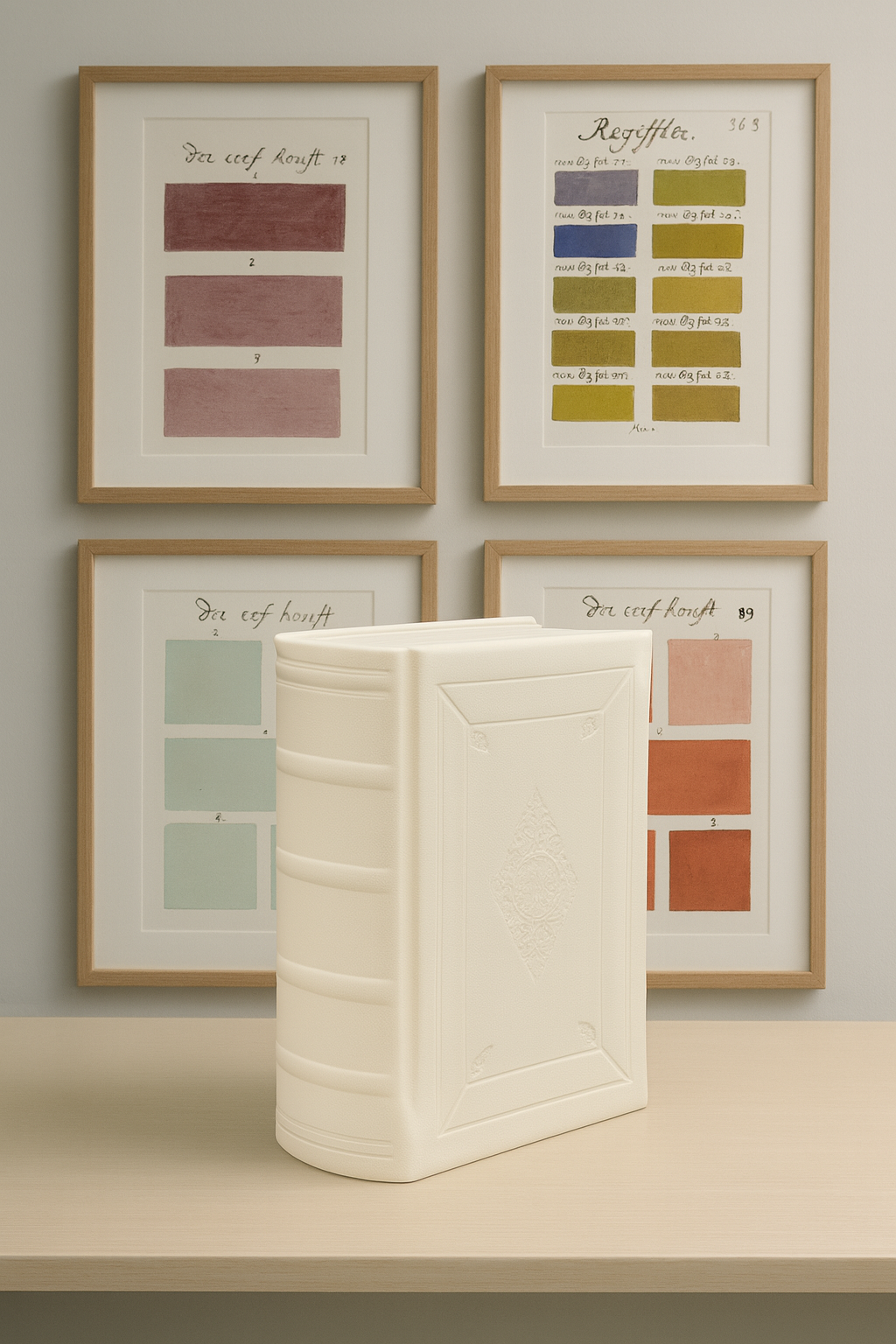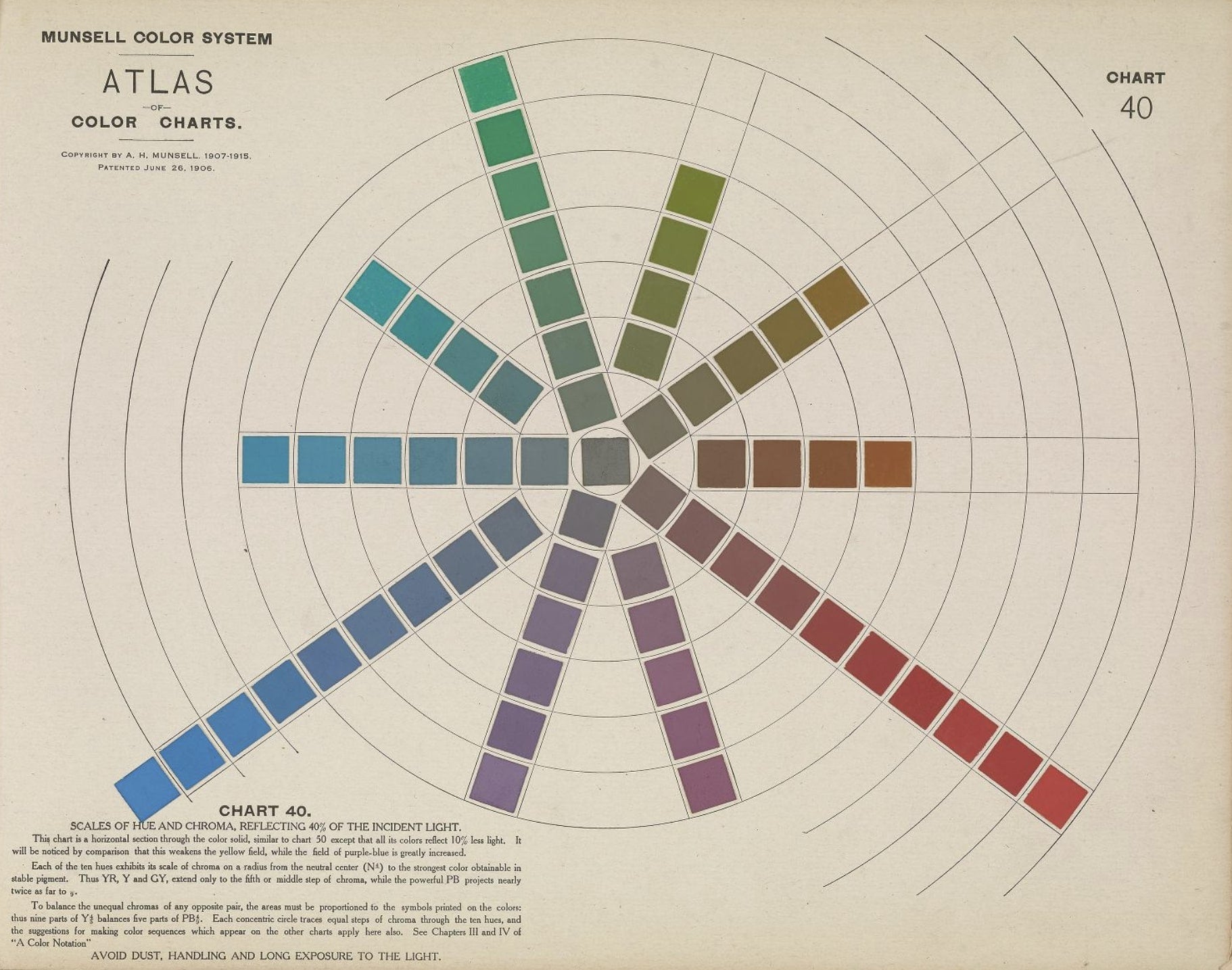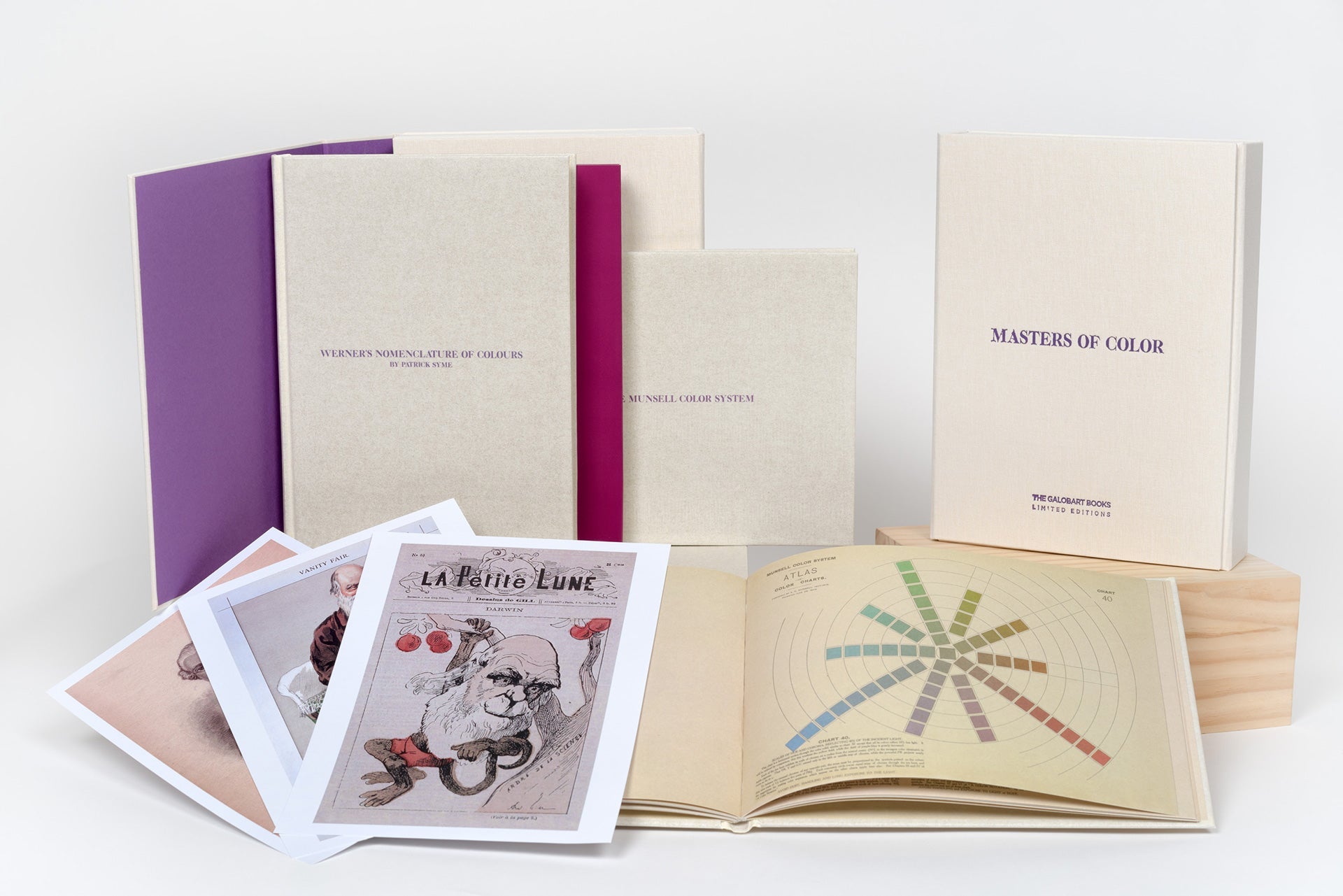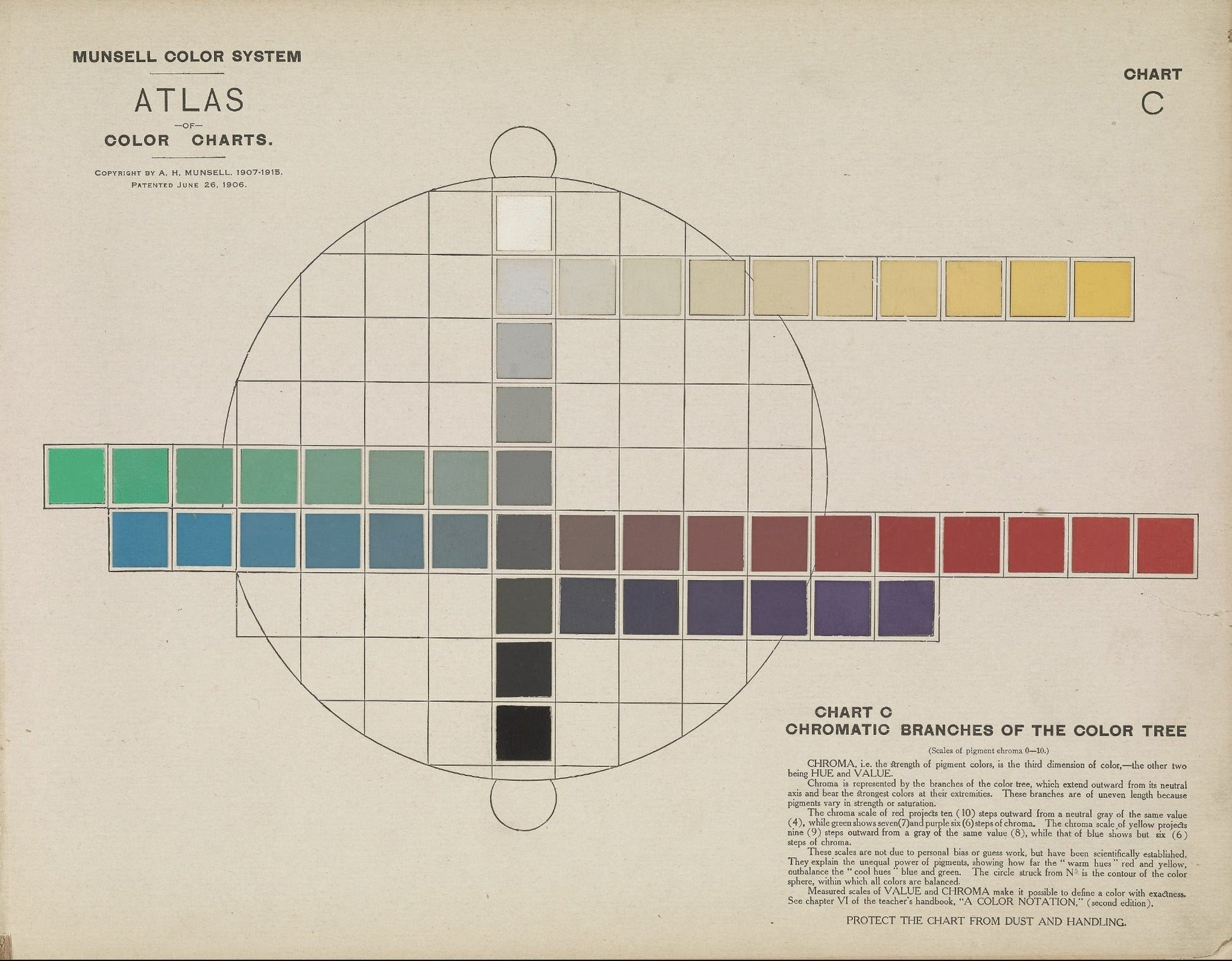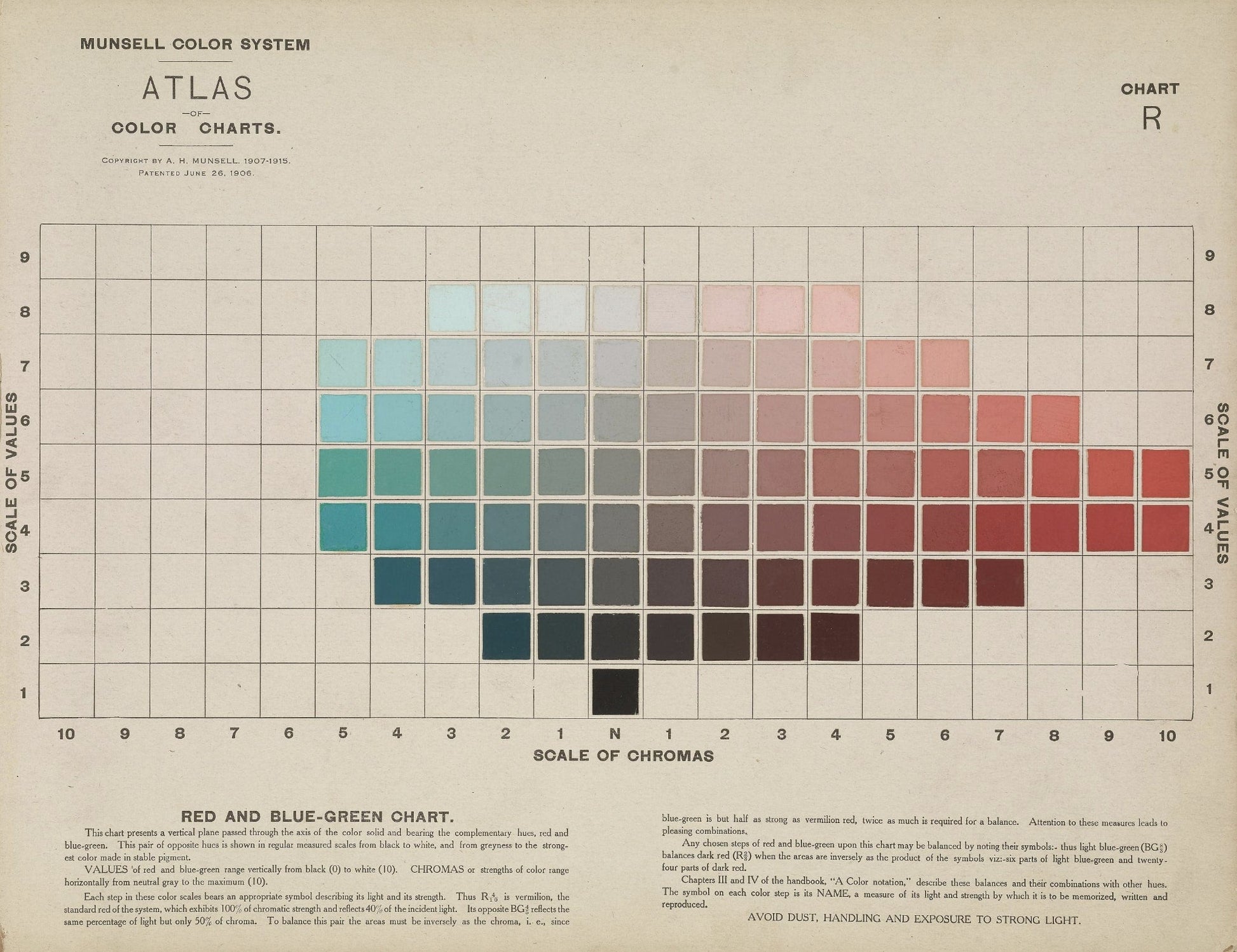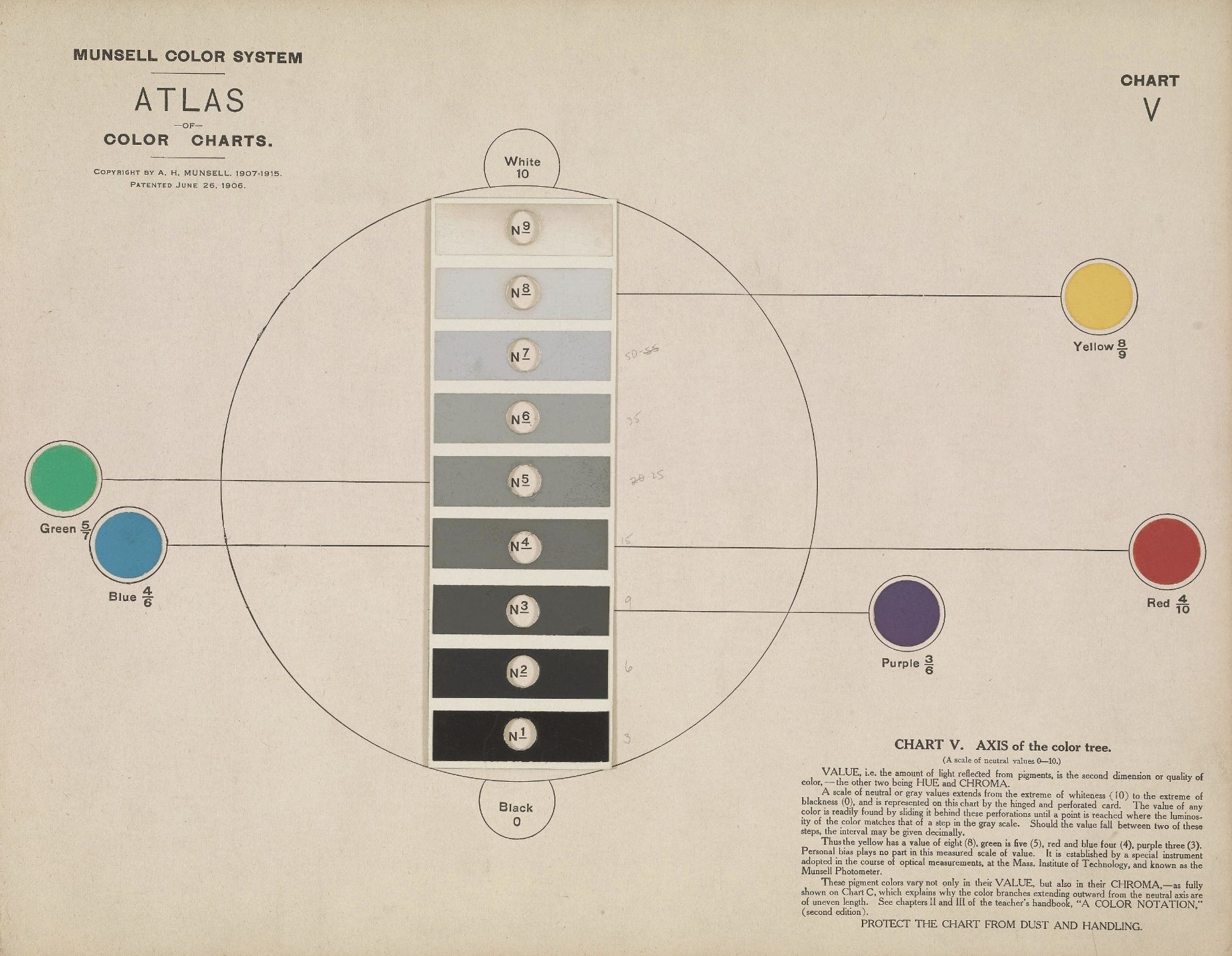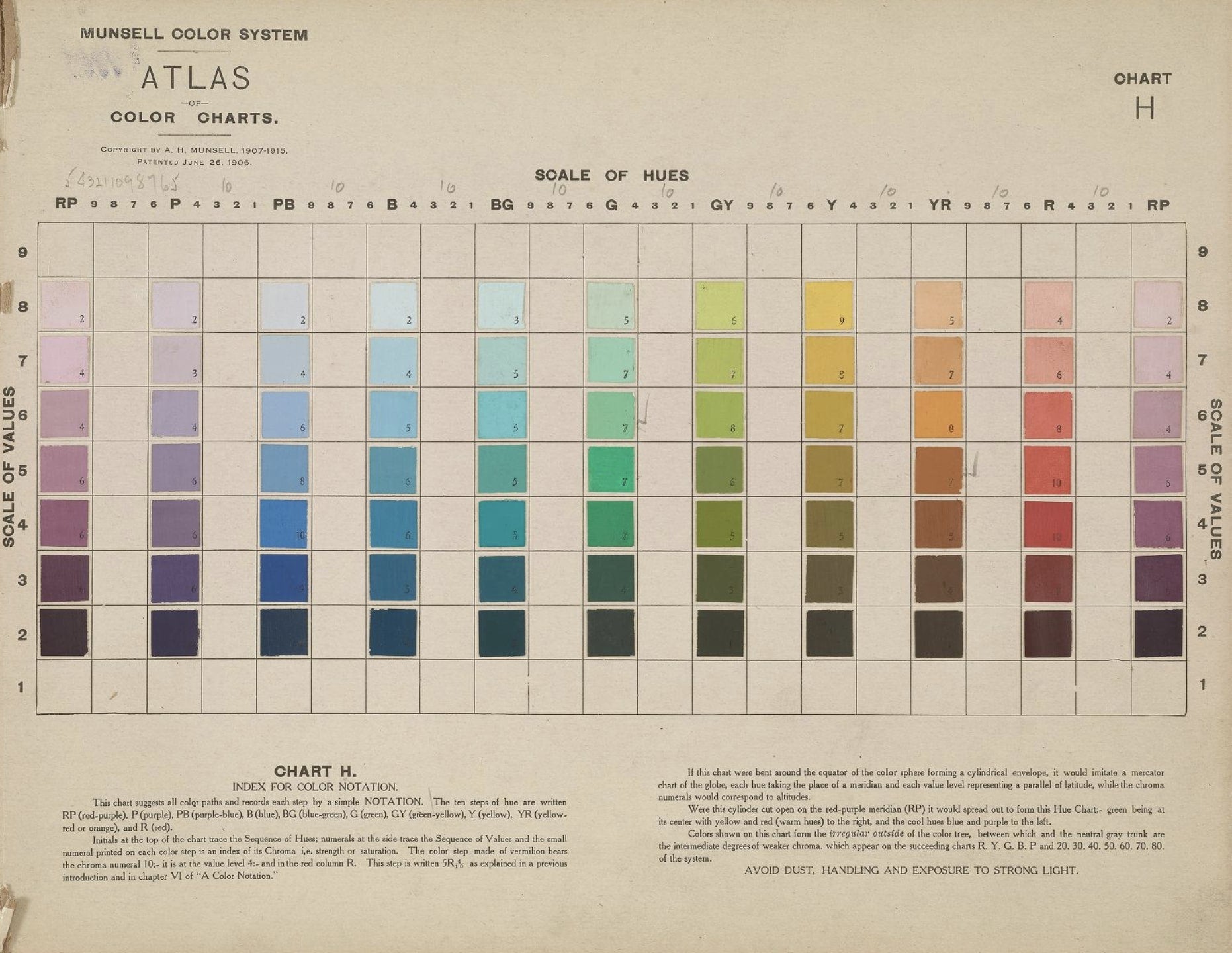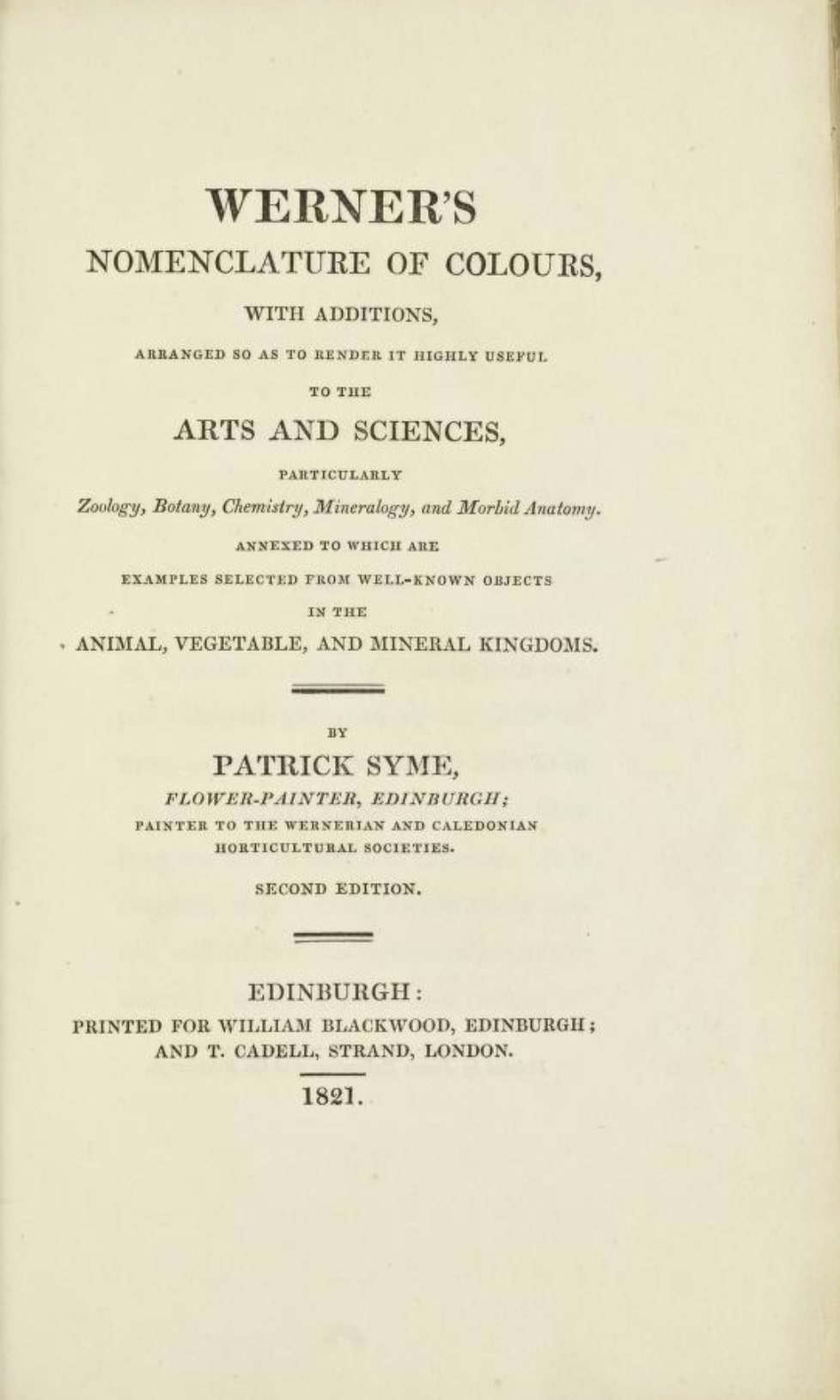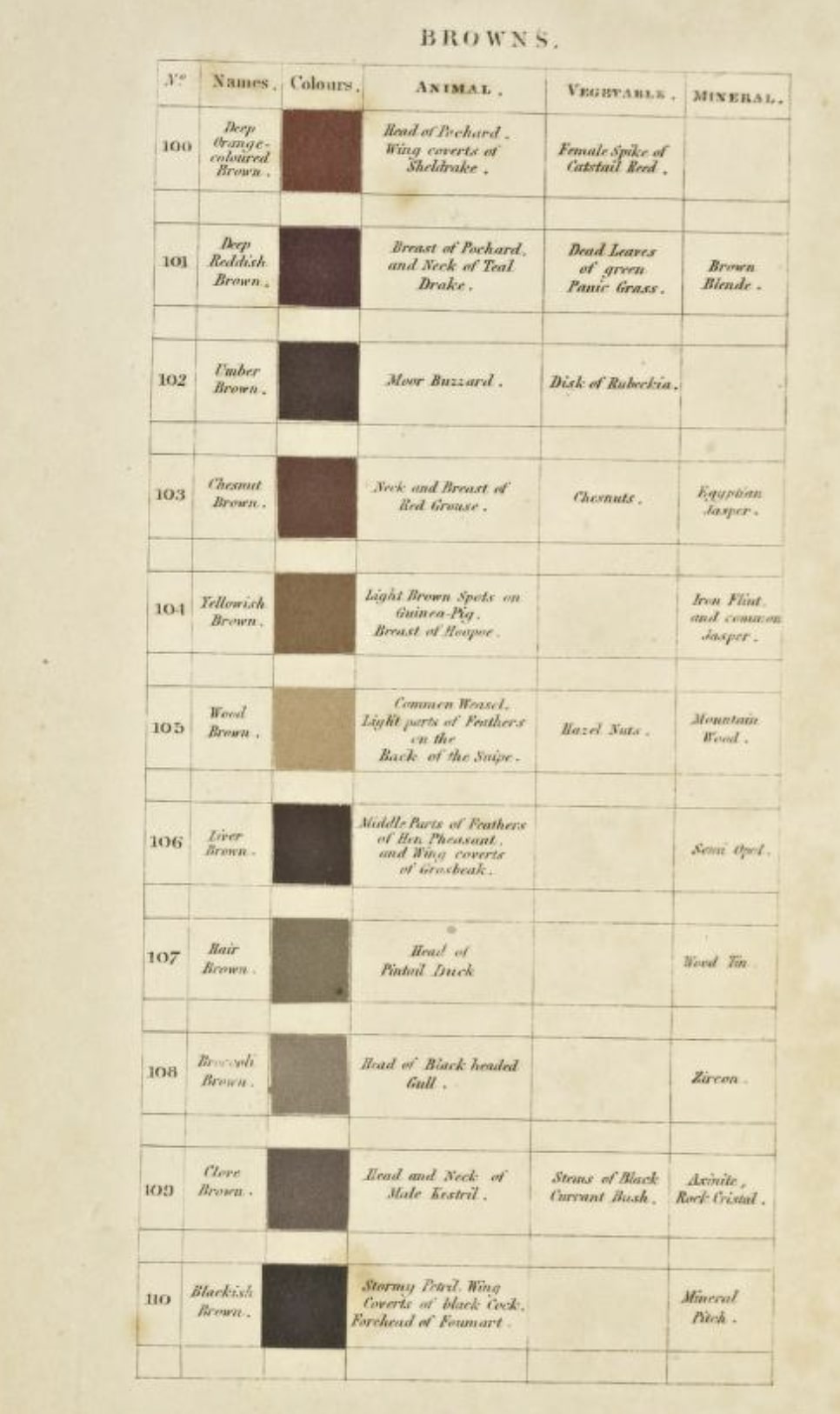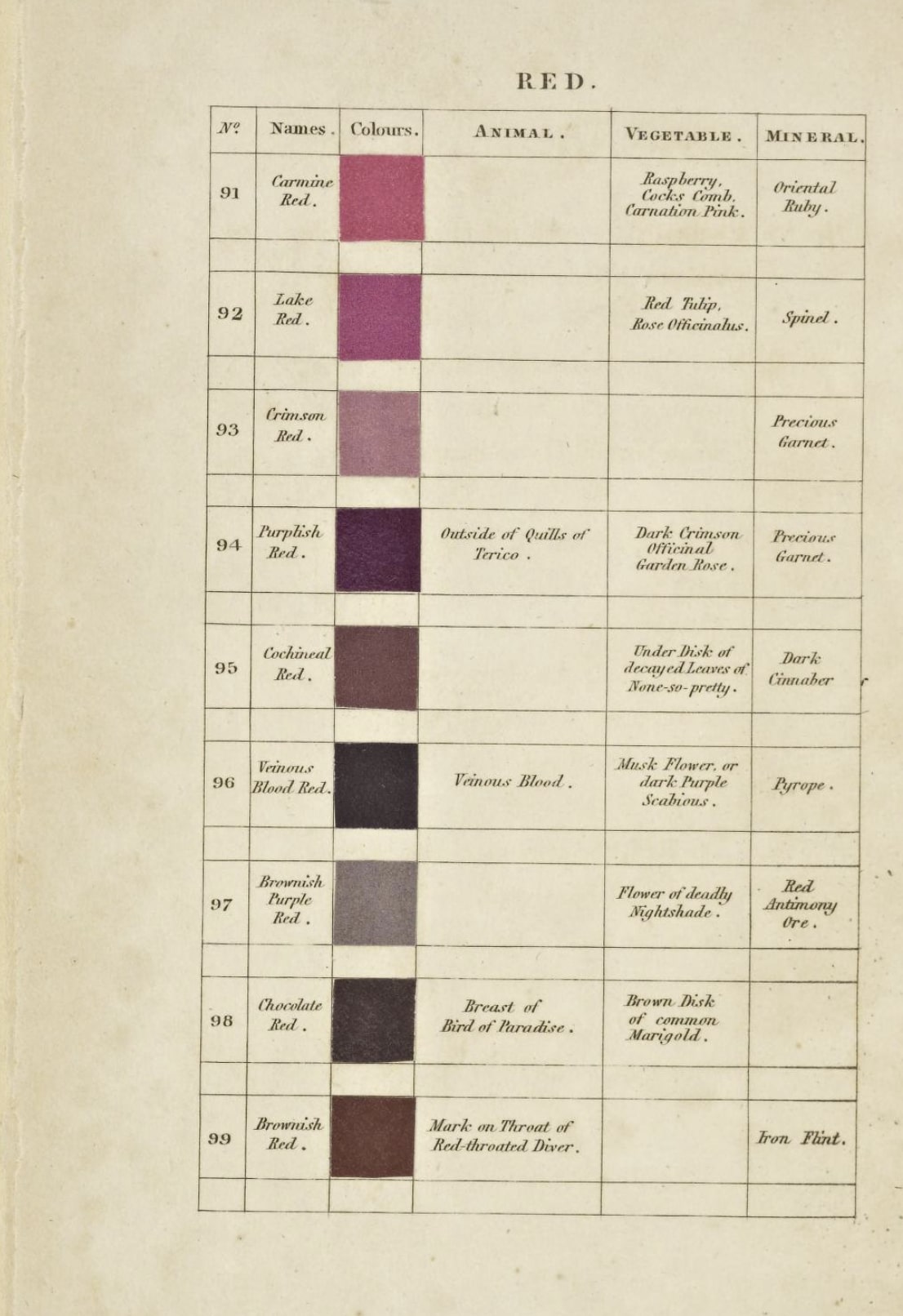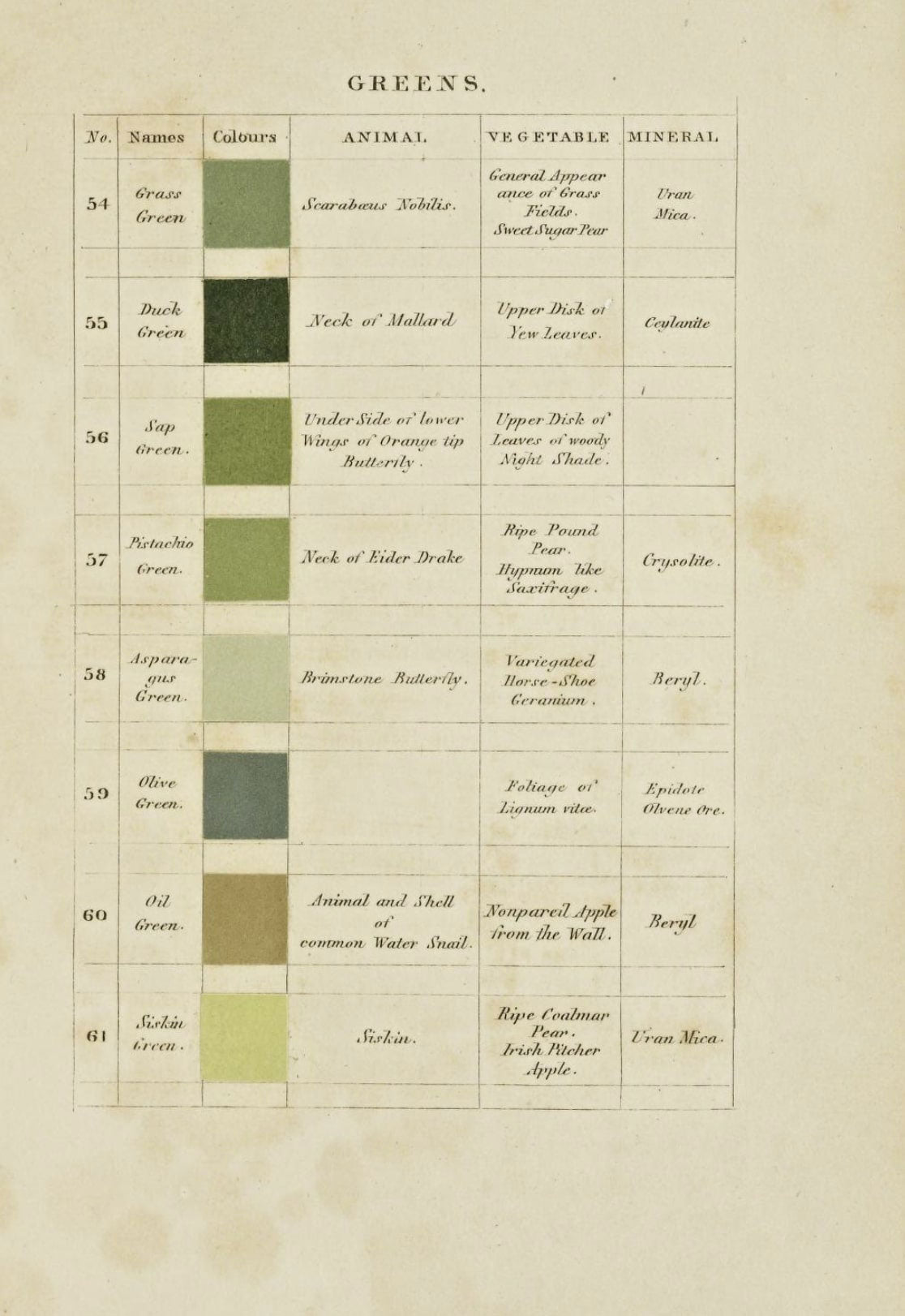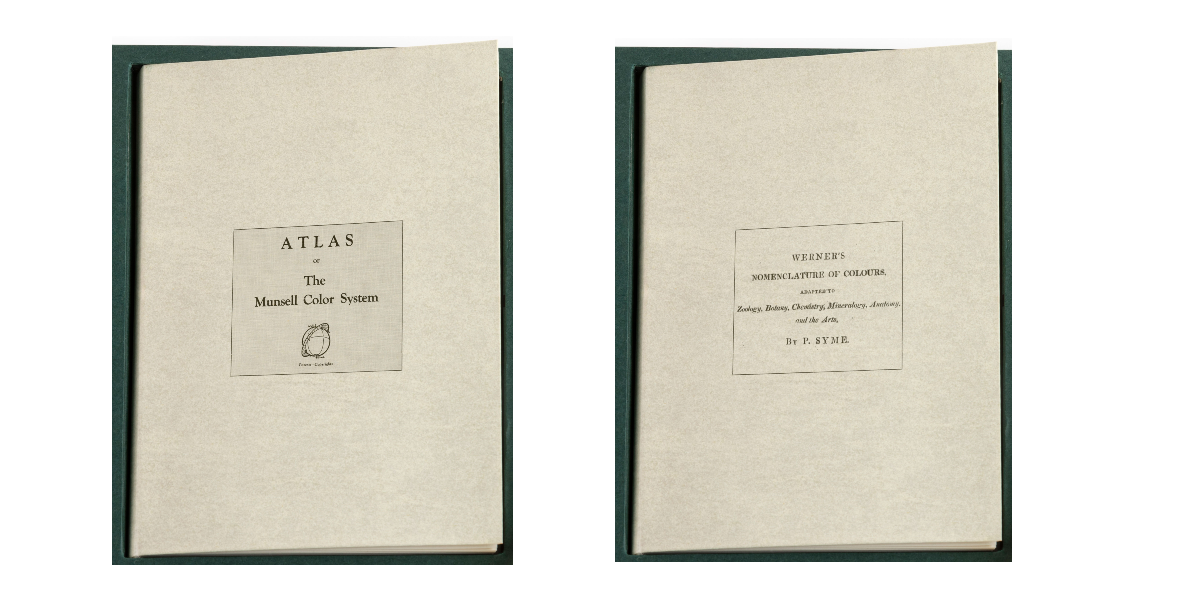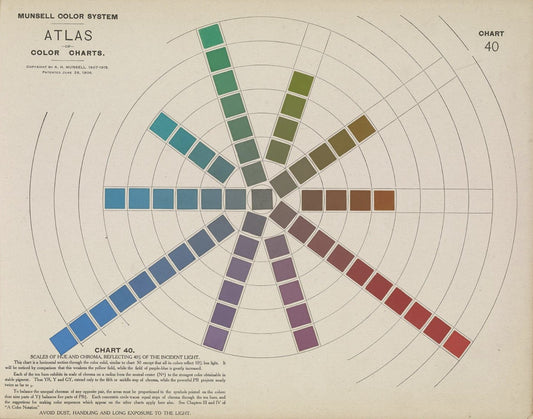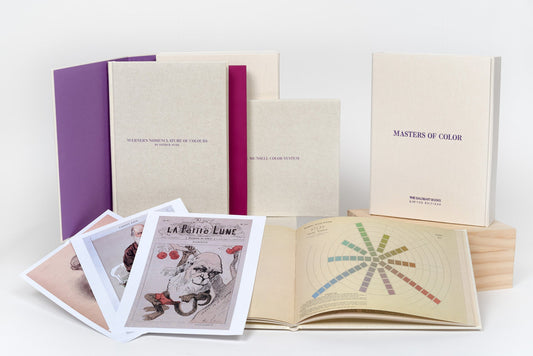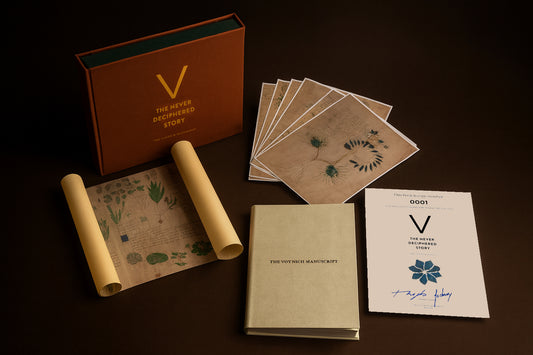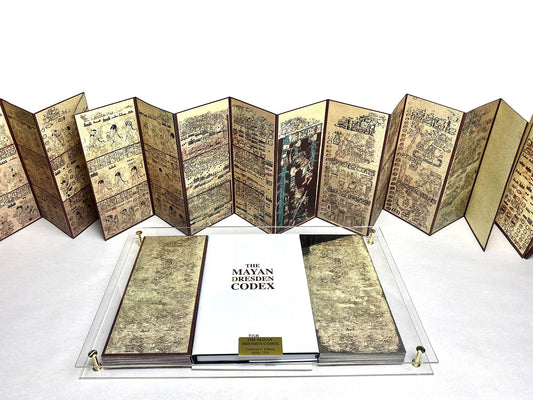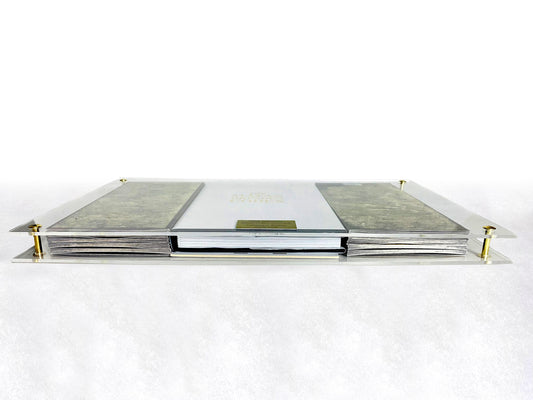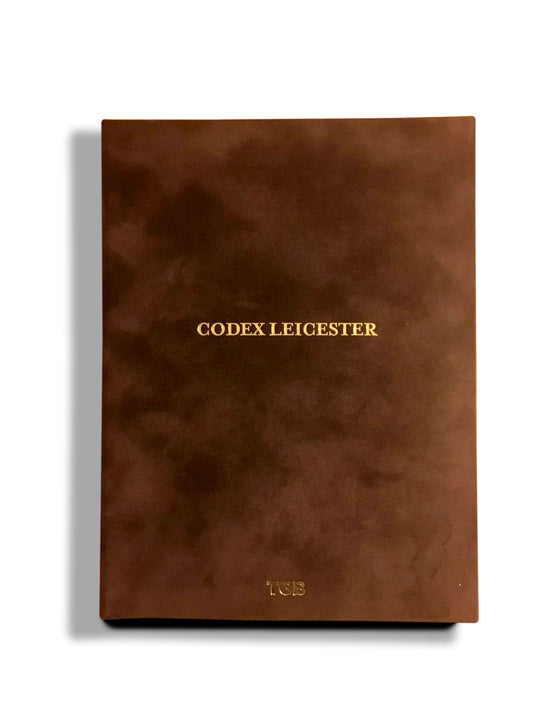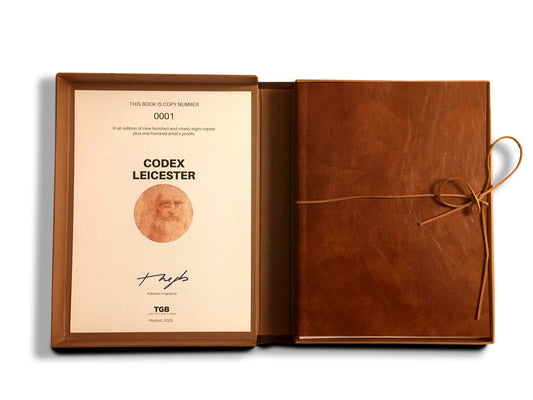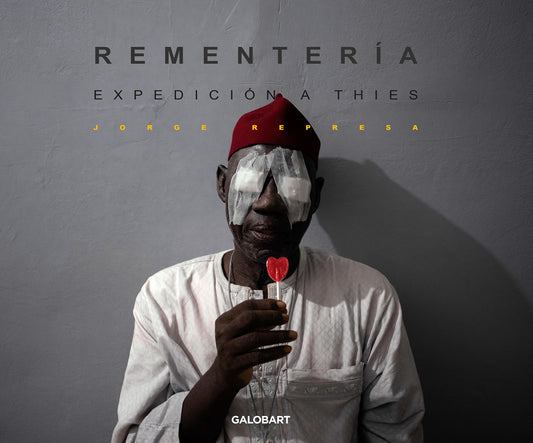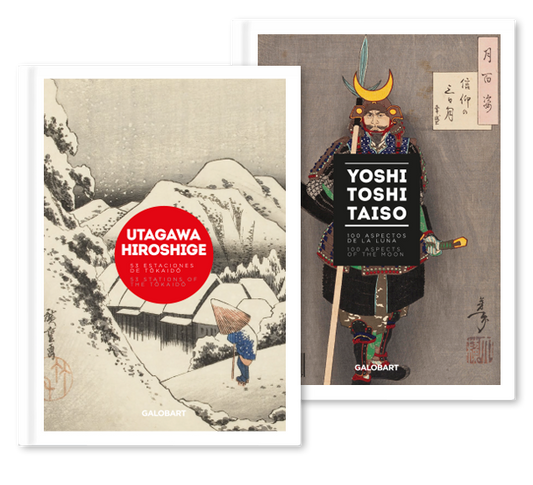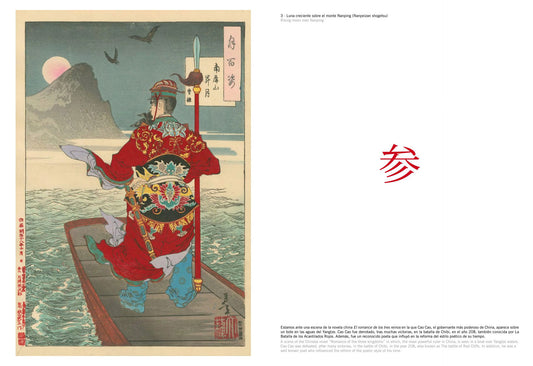COLLECTOR'S EDITION
MASTERS OF COLOR*
*The two color facsimile editions
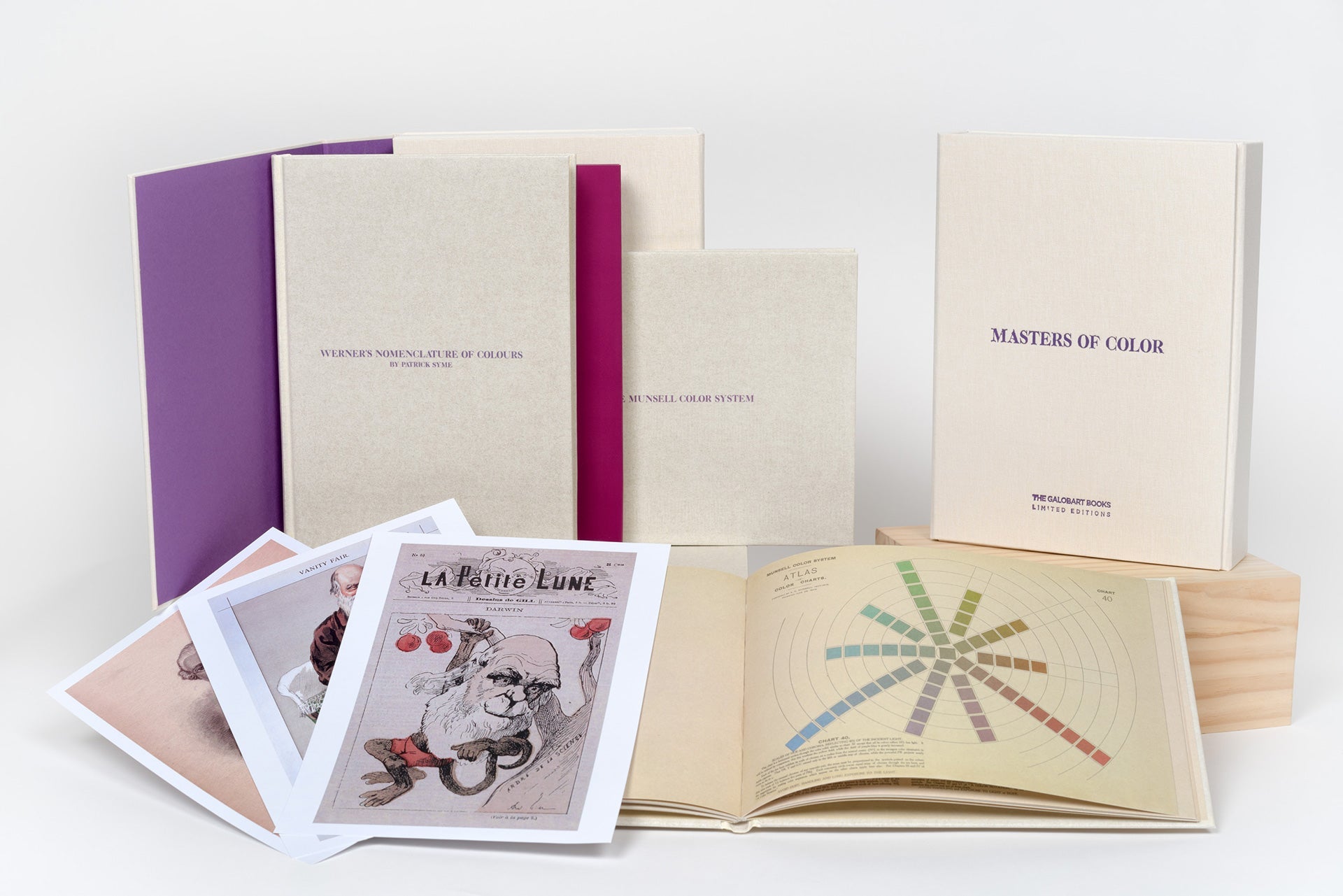
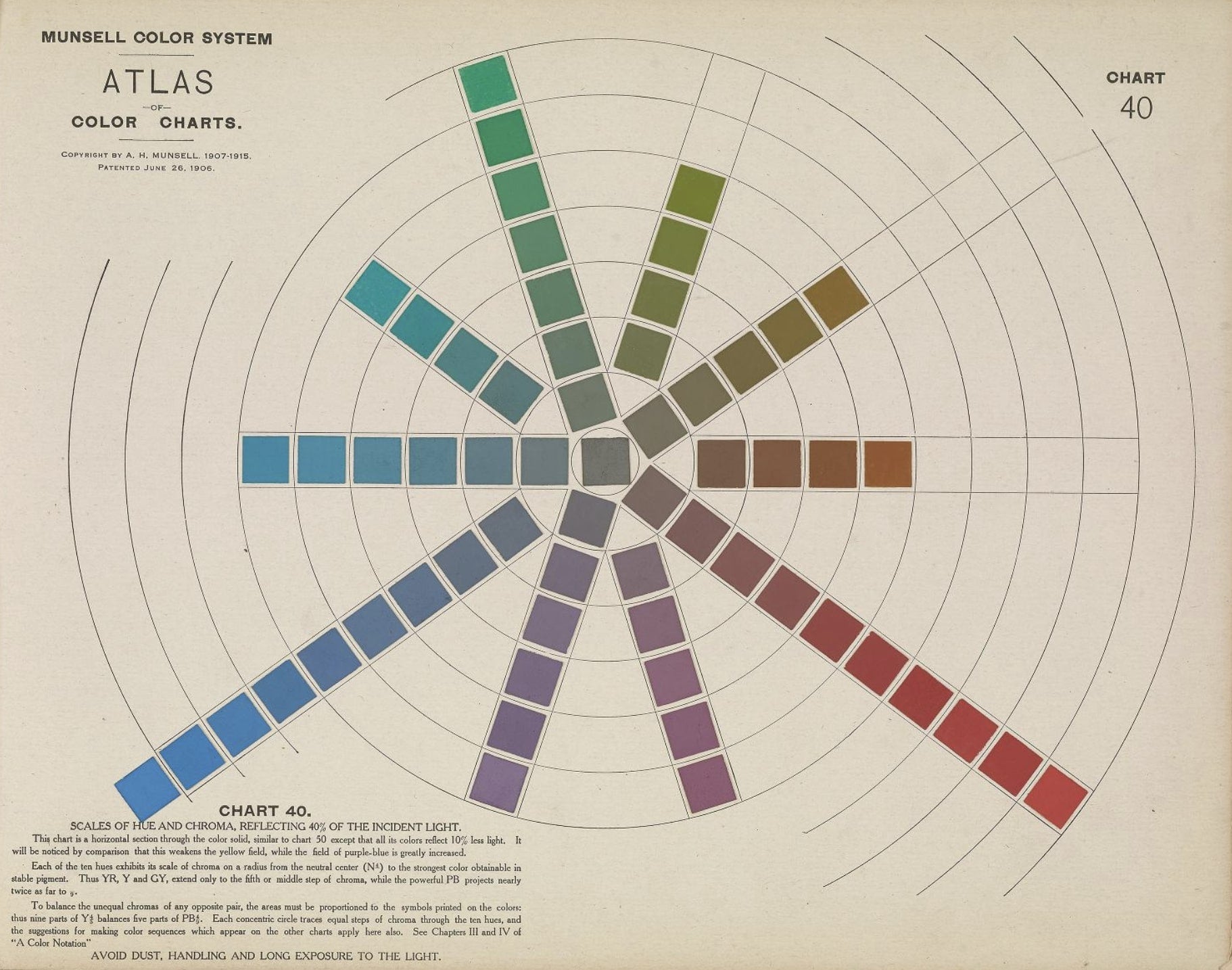
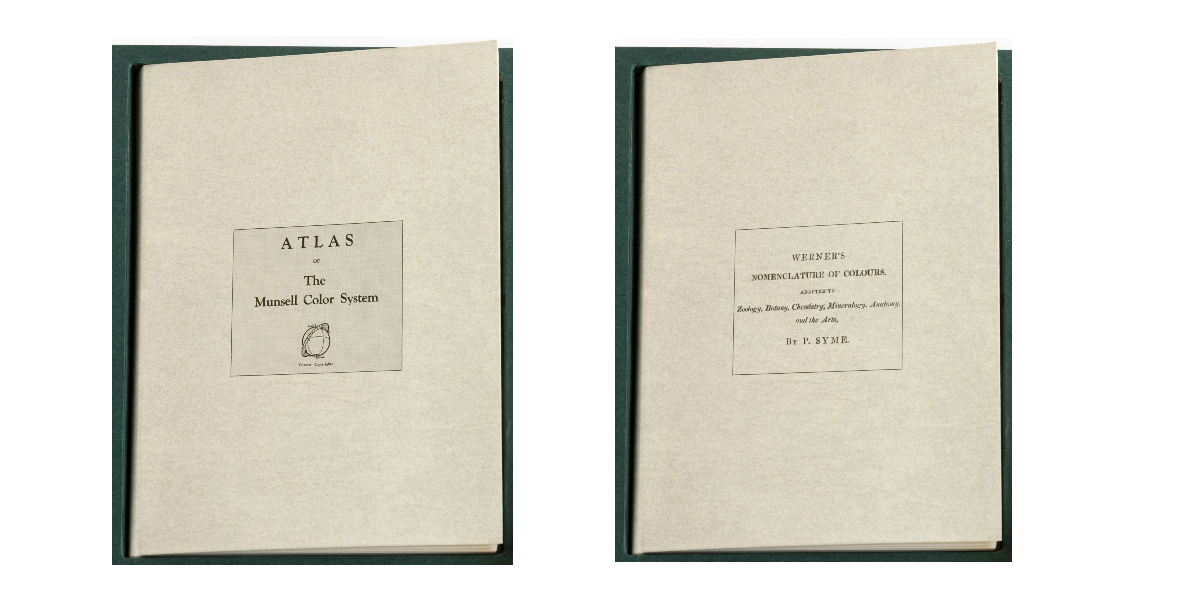
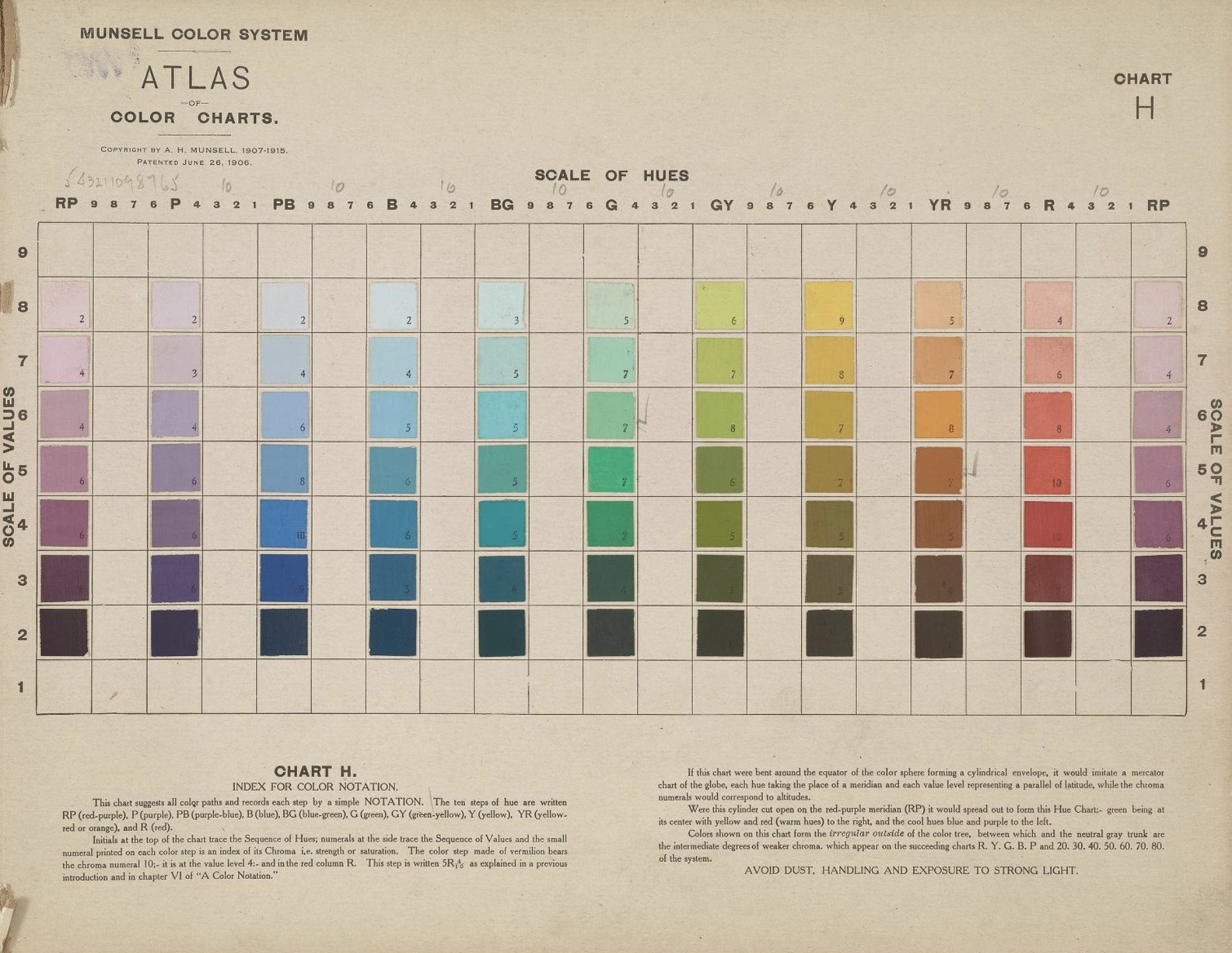
Masters Of Color - Collector's Edition
Masters Of Color - Collector's Edition
*The two color facsimile editions
Couldn't load pickup availability
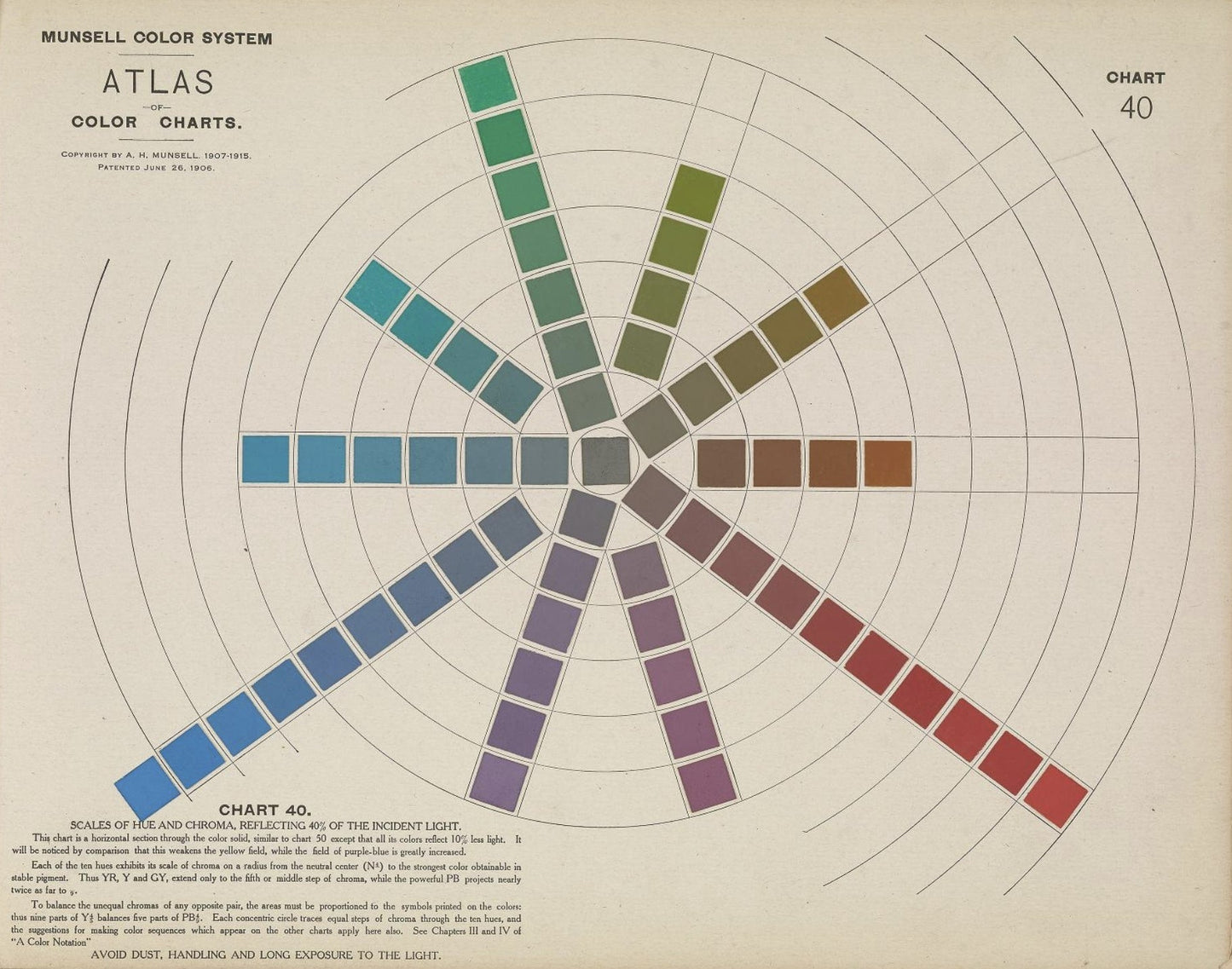
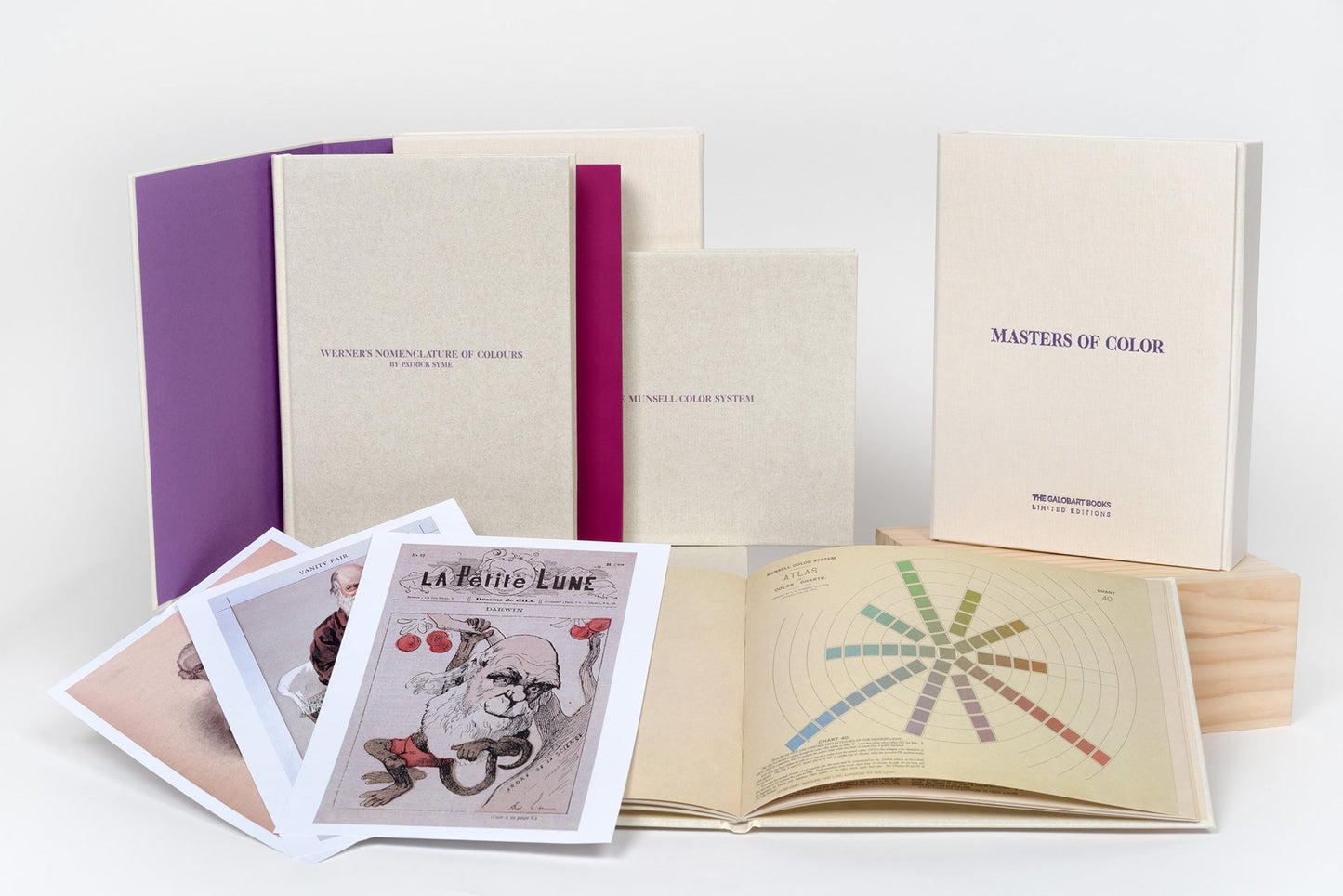

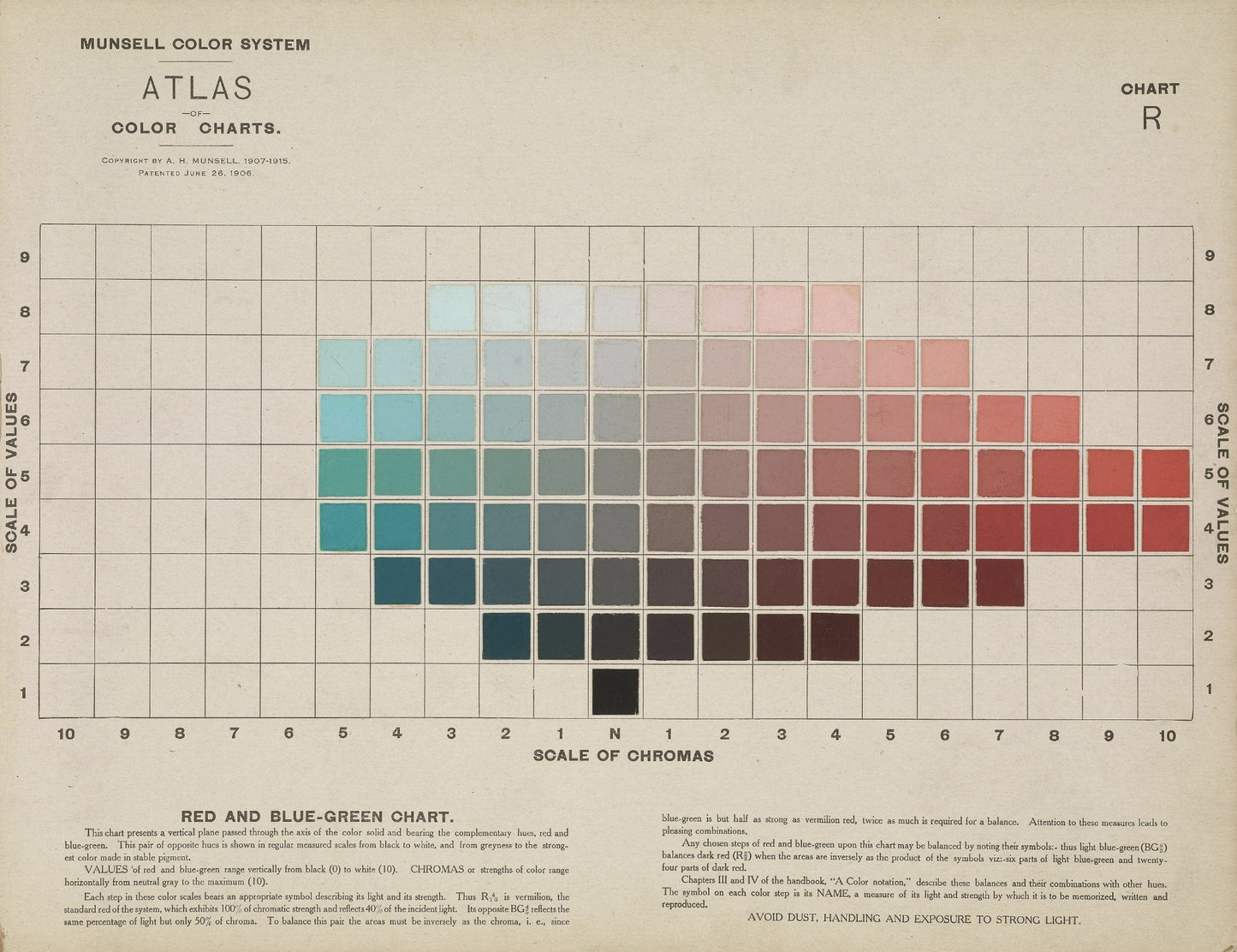
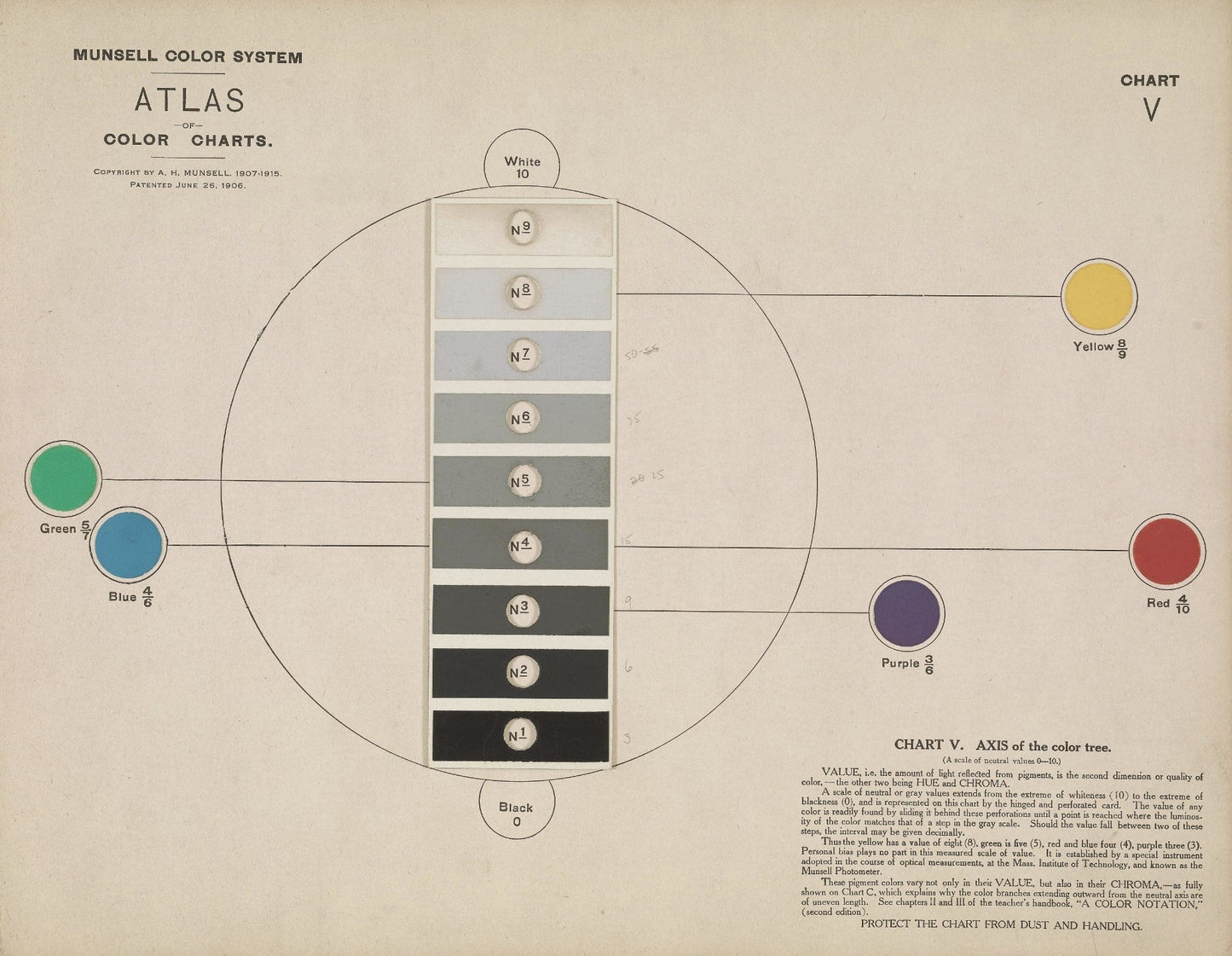
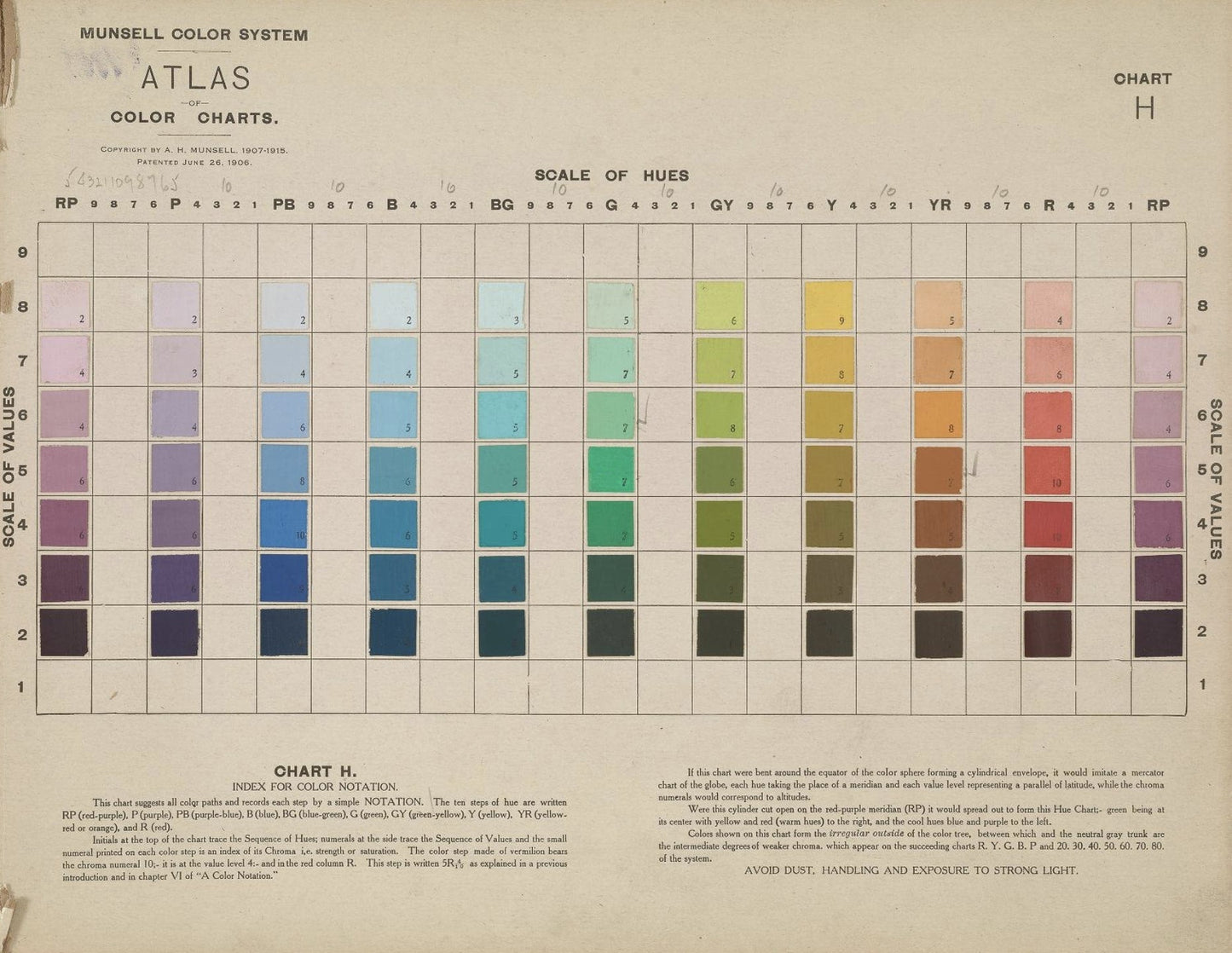

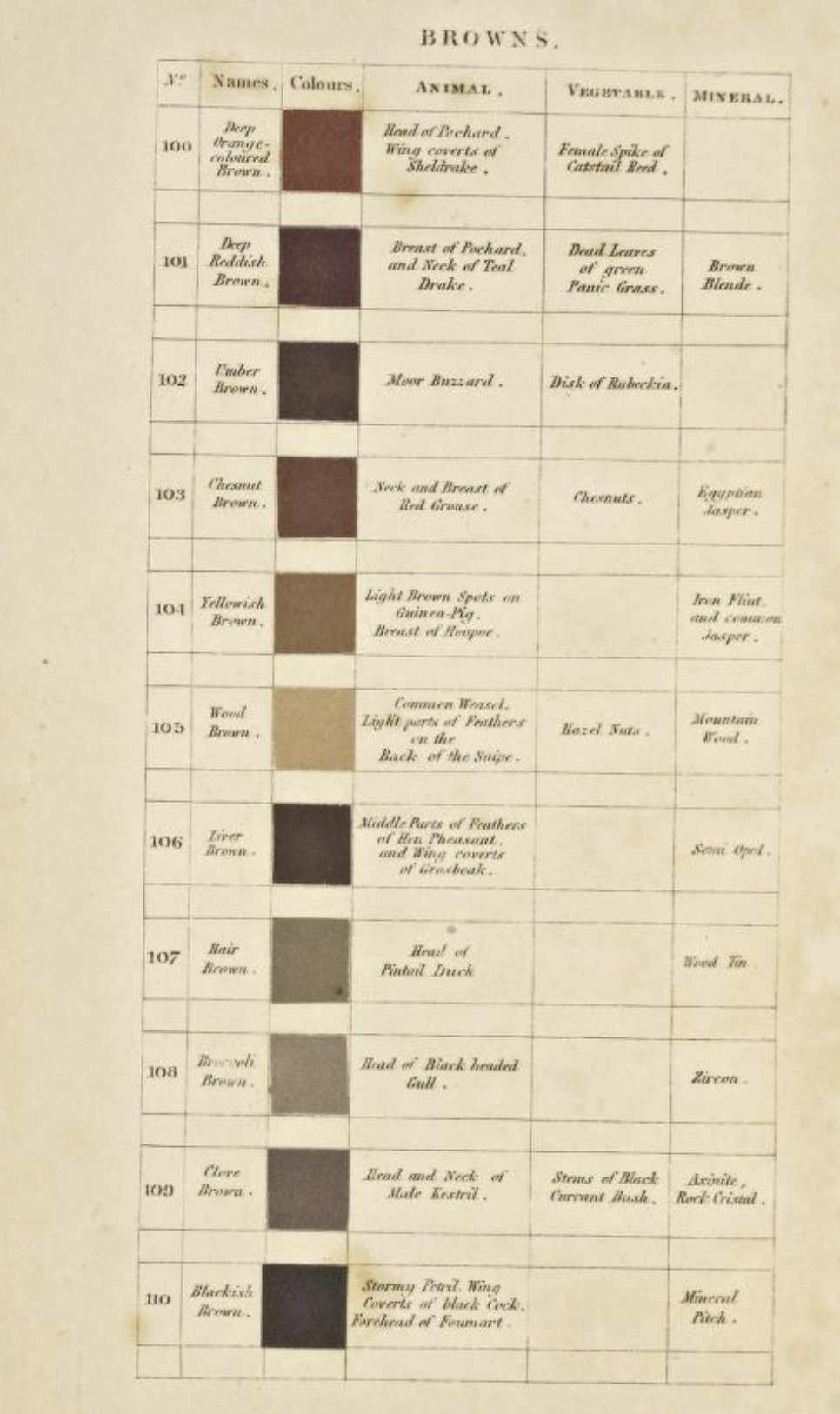


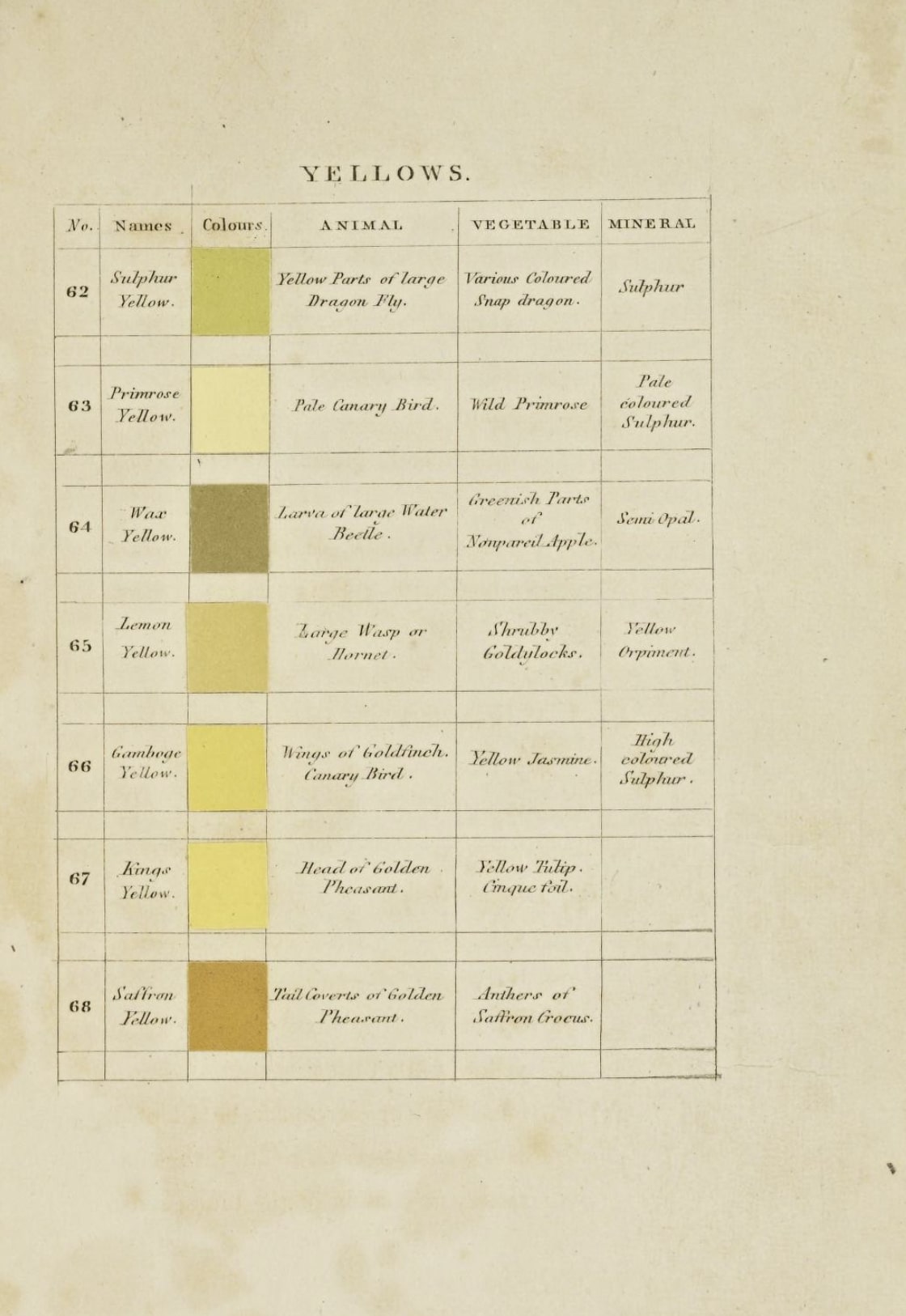
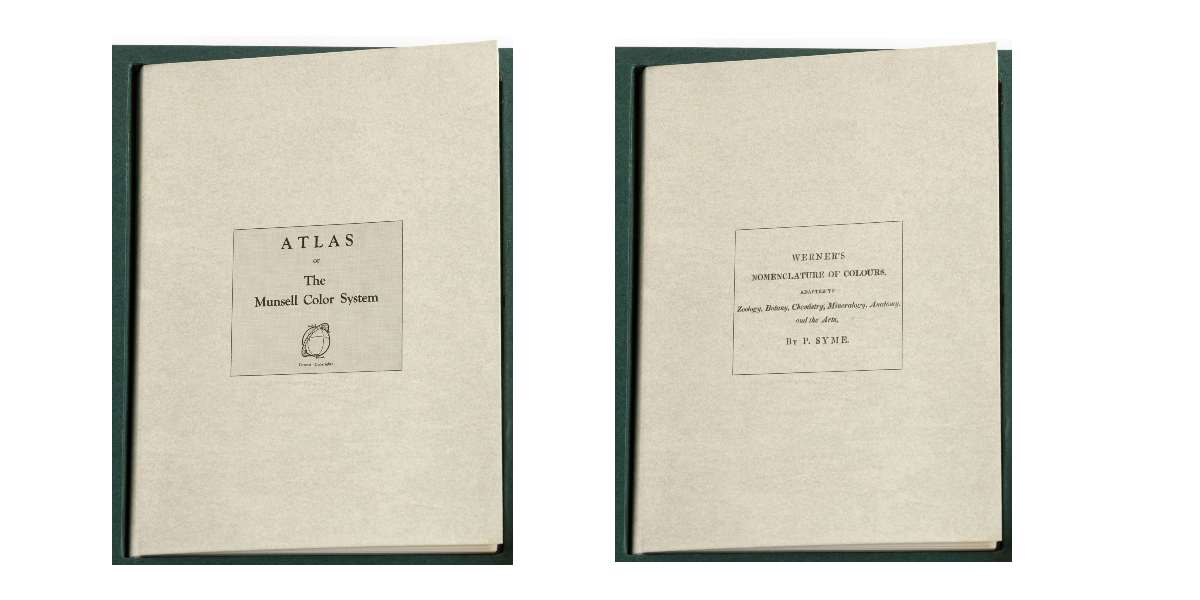
COLLECTOR'S EDITION*MASTERS OF COLOR*
Limited artistic edition of 999 copies, numbered and signed:
Two facsimile books reproducing the originals:
-Werner's Nomenclature of Colors" by Patrick Syme (1821)
-Atlas of the Munsell color system (1915)
Each book is hand-bound in natural parchment.
And a book with texts in Spanish and English by renowned artists from the art world, graphic designers, advertising creatives, color experts...
Today €130 Euros / After€180
*Shipping costs included. Receive it in a few days
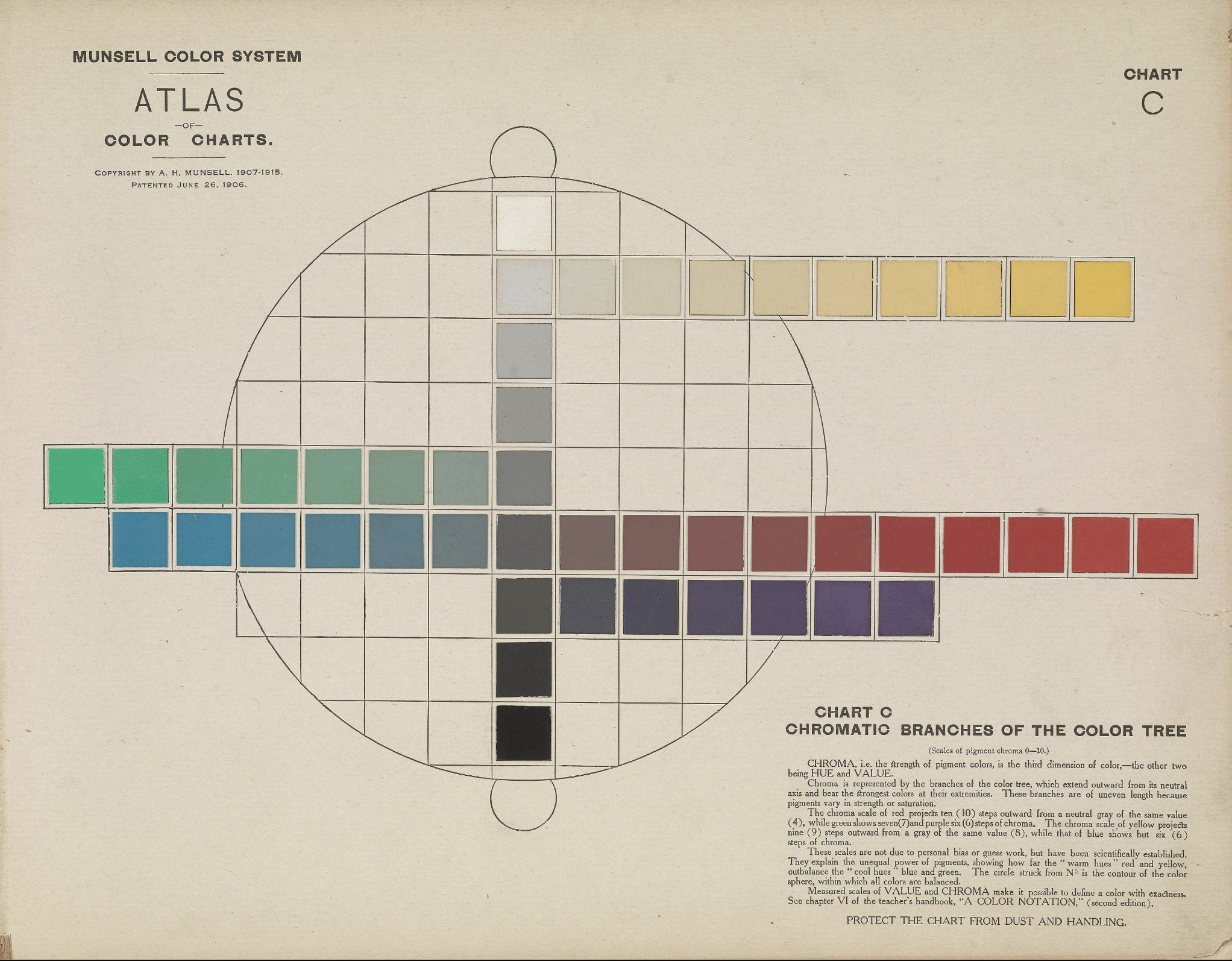


Atlas of the Munsell Color System (1915)
The Munsell Color Atlas is a reference publication that provides a comprehensive visual representation of the Munsell color space. The Munsell color system, developed by Albert H. Munsell in the late 19th and early 20th centuries, is a color model that organizes colors based on three dimensions: hue, value (lightness), and chroma (color intensity).
The Munsell color system is widely used in various fields, including art, design, and sciences like geology, where accurate color communication is important. Munsell color notation uses a combination of numbers and letters to describe colors in a standardized and accurate way.
The Munsell Color Atlas typically contains a series of color samples organized in a three-dimensional color space according to Munsell coordinates. It allows users to visually understand how colors change along the hue, value, and chroma axes. This atlas is a valuable tool for professionals who need to work with color consistently and accurately.
The Munsell color system represents one of the foundations in the field of lighting, and is also an auxiliary resource in many other disciplines. To give an example of the system's usefulness and relevance, thanks to the contributions of Albert Munsell, a century later, with the help of the Munsell Color Laboratories in Rochester, New York, two astronomers, Karl Glazebrook and Ivan Baldry, from Hopkins University in Baltimore, discovered the color of the universe, a pinkish beige, after studying the light emitted by some 200,000 galaxies. At first, both researchers thought they had stumbled upon a shade of turquoise, but, as Glazebrook later stated, "There are no errors in science, but there are in perception."
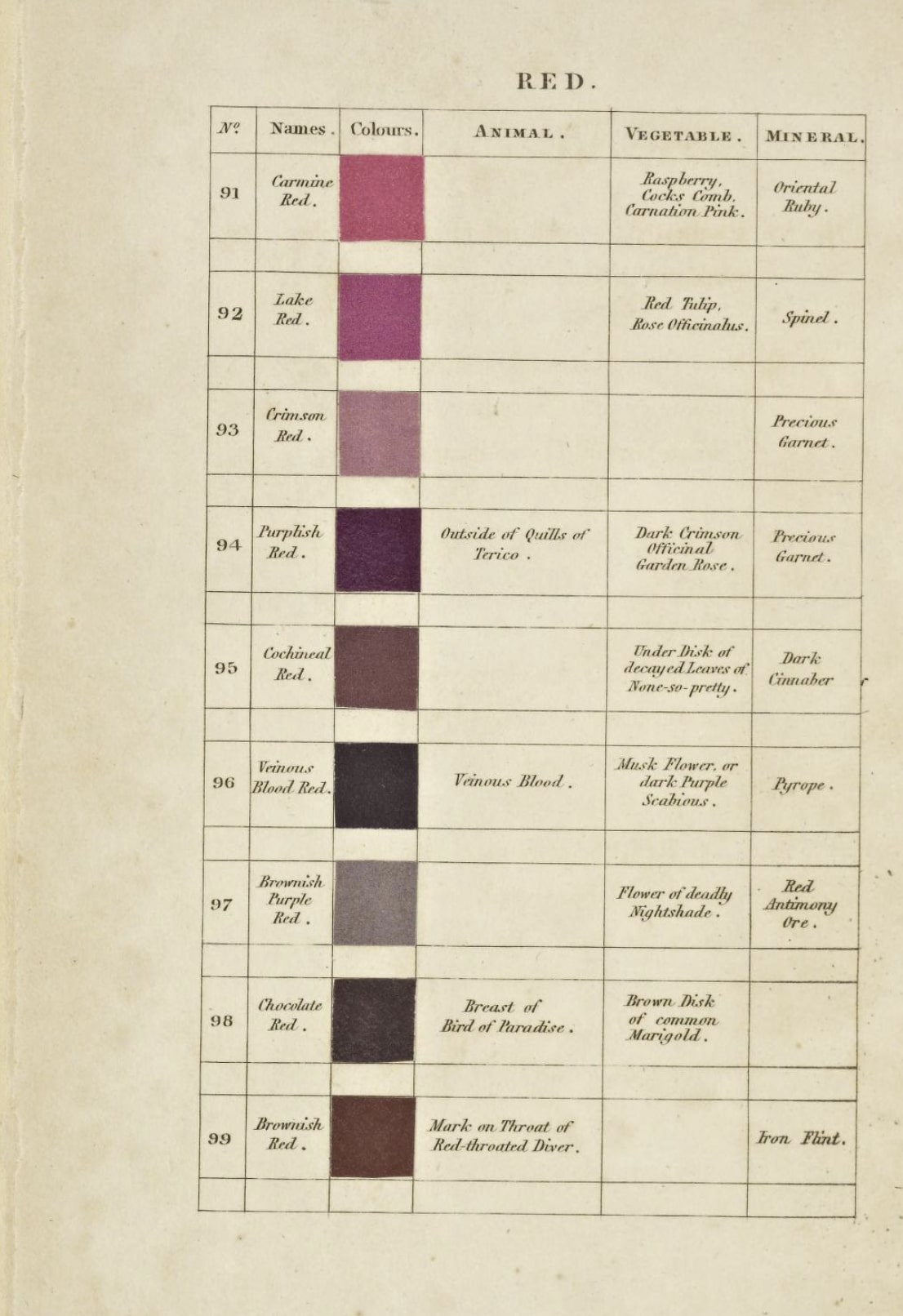
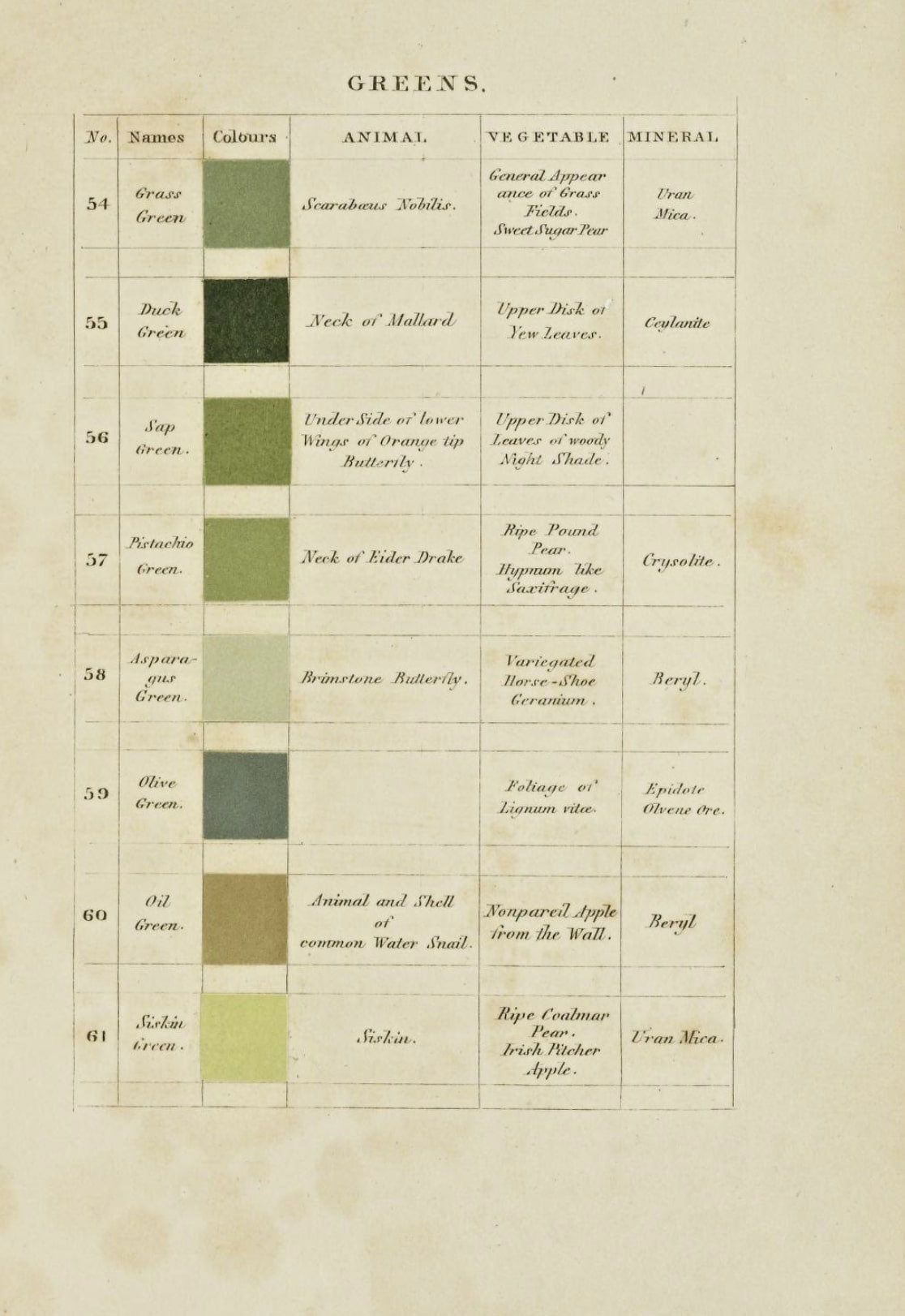
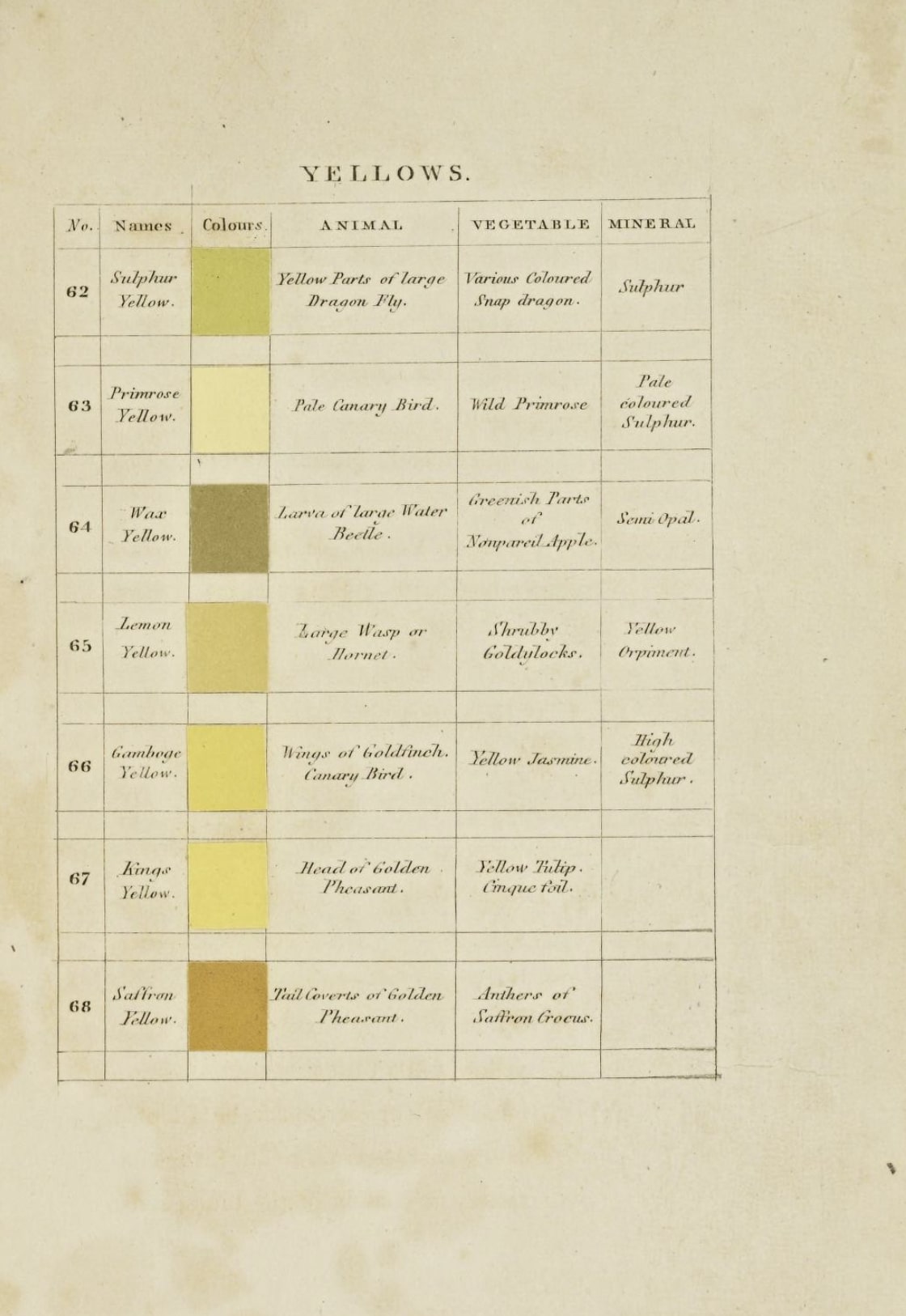
Werner's Nomenclature of Colours, by Patrick Syme (1821)
Werner's Nomenclature of Colours by Patrick Syme is a book that expanded and popularized the original work of the German geologist Abraham Gottlob Werner who, in his 1774 book A Treatise on the External Characters of Fossils (translated into English in 1805), developed a color nomenclature to provide a standard for describing the visual characteristics of minerals. Clearly captivated by the idea, some three decades later the Scottish flower painter Patrick Syme modified and expanded Werner's system. In addition to the mineral referent, Syme added to each of Werner's colors an example from the animal and plant kingdom, as well as an actual patch of color on the page to accompany the words. Whereas Werner had only needed 79 shades for his geological purposes, now open to other areas of nature, Syme added 31 more colors, bringing the total to 110.
Syme's contribution to the book was significant because he provided accurate and detailed color illustrations that brought Werner's color descriptions to life. The book was published in 1814 under the title "Werner's Nomenclature of Colors, with Additions, so arranged as to be of great use to the arts and sciences, particularly zoology, botany, chemistry, mineralogy, and morbid anatomy; selected examples of well-known objects in the animal, vegetable, and mineral kingdoms being appended."
This version of the book included color plates with samples and descriptions relating specific colors to objects in the natural world, making color nomenclature easier to understand and use in one's work. It was especially useful for artists, scientists, and naturalists who needed to accurately describe and document colors.
With Syme's new categories of reference, a whole new world of relationships between disparate aspects of nature has been born, encounters dictated solely by color. For example, for the "white of skimmed milk" we have the white of human eyeballs (animal), the reverse of the petals of the blue liverwort (vegetable), and the common opal (mineral); wonderfully strange monochrome tableaux are conjured: on a calamine crop, a bed of straw on which a polar bear sits; or the style of an orange lily encrusted with Brazilian topaz and the eyes of the largest flesh fly.
Syme's reliance on obscure references to the natural world stemmed from the era's obsession with taxonomies, a line that ran from Carl Linnaeus to Charles Darwin (who used Werner's Nomenclature on the Beagle). These individuals often relied on a network of collectors and explorers, obsessed with ordering and categorizing, locating butterflies and stuffing birds. In the age of mass digital reproduction, color is more difficult than ever. But it's perhaps easier to turn to Pantone than to Abraham Gottlob Werner.
The guide was especially influential during the 19th century and had an impact on various disciplines, including art, botany, zoology, and geology. It allowed for accurate descriptions of colors and facilitated the exchange of information and knowledge about the natural world.
This spectacular book made Werner's Color Nomenclature widely recognized and used in various scientific and artistic fields. The book played an important role in standardizing color descriptions and promoting consistent communication about colors across disciplines.
This color scheme was used by naturalists in the 19th century. Charles Darwin used it in his scientific observations made during the voyage of the Beagle. Darwin used a copy of this book to clearly and permanently identify and record the colors of specimens, as over time the eye colors of fish or birds faded or were lost due to preservatives. Some examples of it appear in his 1835 Beagle Journals, such as "cowslip yellow," a color Syme gives on pages 38 and 64.
What does it include?
*TWO BOOKS
Two facsimile editions reproducing the originals:
• Munsell's Atlas of Color
• Werner's Nomenclature of Colors" by Patrick Syme (1821)
Each book is hand-bound in natural parchment.
*BOOK
And a book about both works with texts in English by renowned artists from the art world, graphic designers, advertising creatives, color experts...
*CASE
A numbered edition case.

CONTACT US FOR ANY QUESTIONS
Others love it too...
-
300 YEARS BEFORE COLOR Velvet Royal Blue Edition. NEW.
Regular price €150,00Regular priceUnit price / per -
Masters Of Color - Collector's Edition
Regular price €130,00Regular priceUnit price / per -
The Voynich Manuscript
Regular price €150,00Regular priceUnit price / per -
The Dresden Codex
Regular price €160,00Regular priceUnit price / per -
Codex Leicester (Leonardo Da Vinci)
Regular price €170,00Regular priceUnit price / per -
Expedition to Thies
Regular price €50,00Regular priceUnit price / per -
Codex Gigas XXL
Regular price €1.000,00Regular priceUnit price / per
